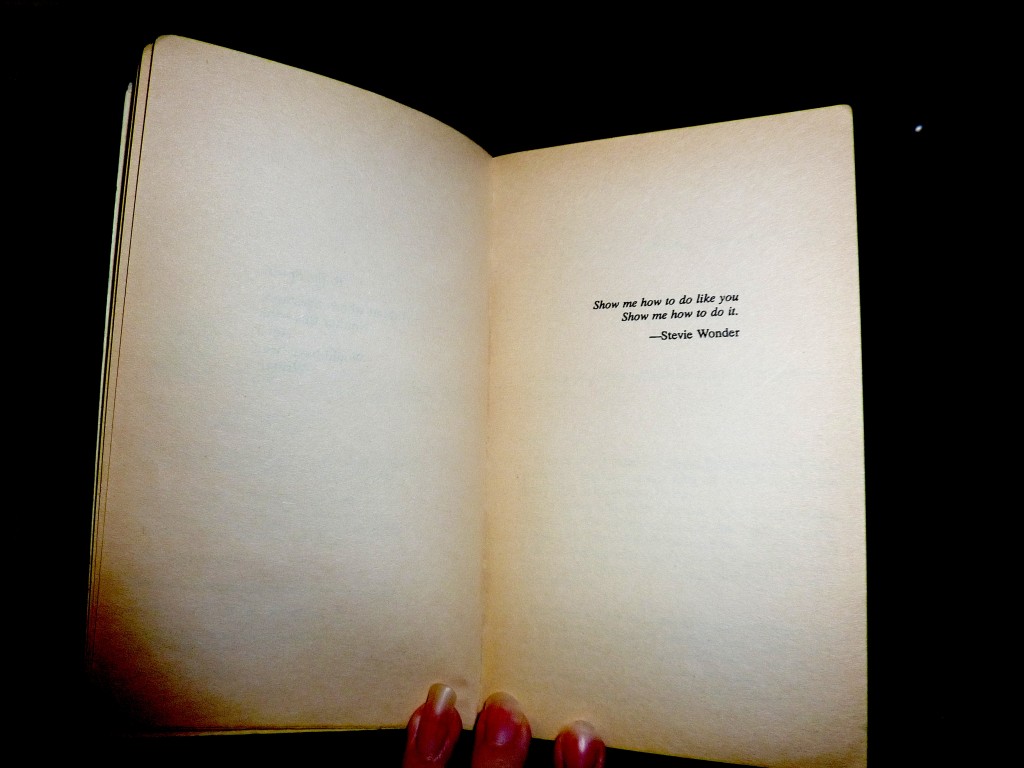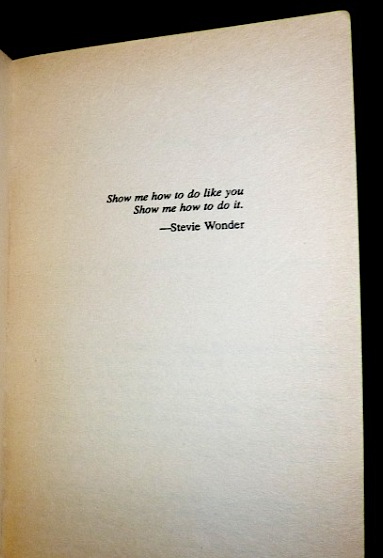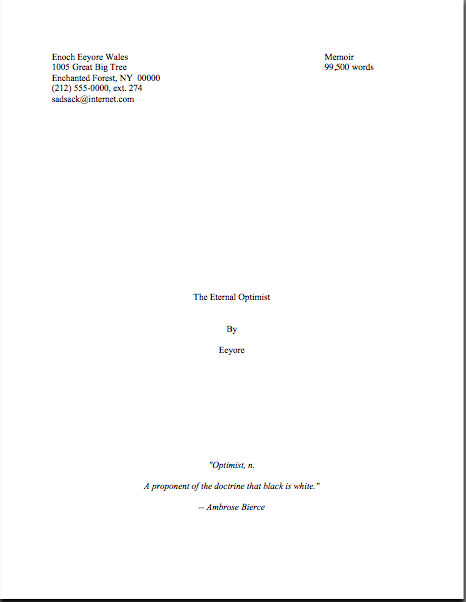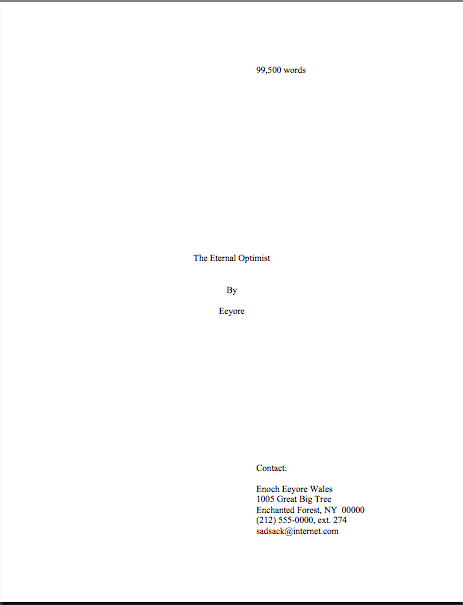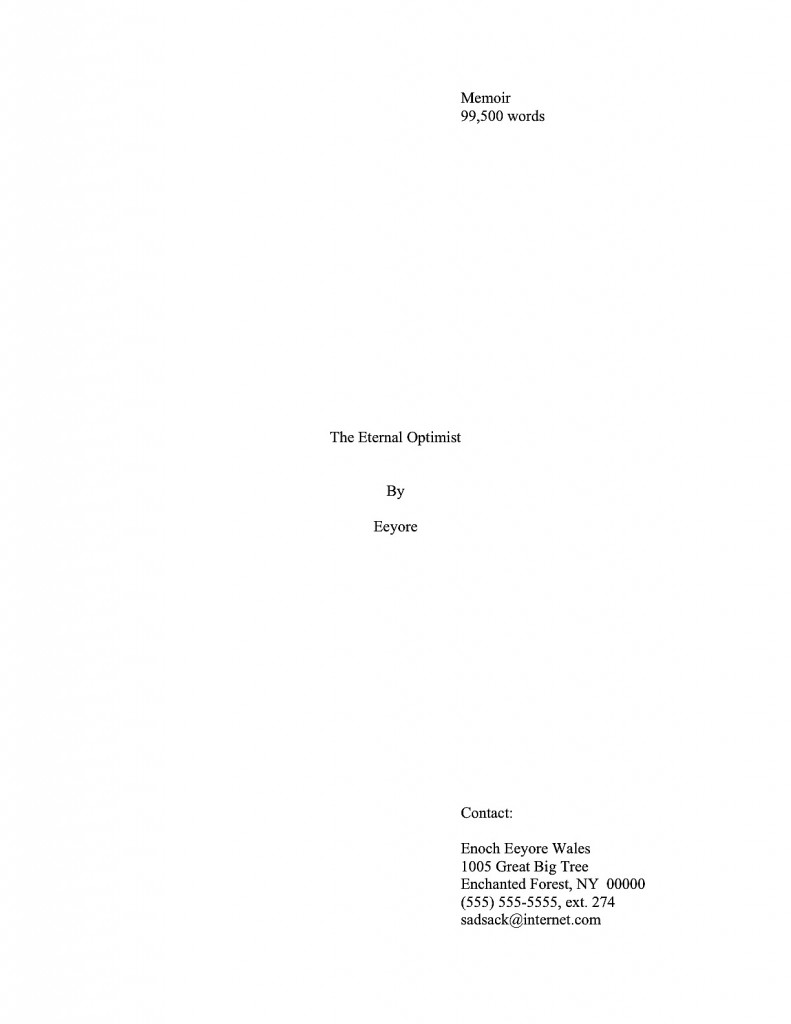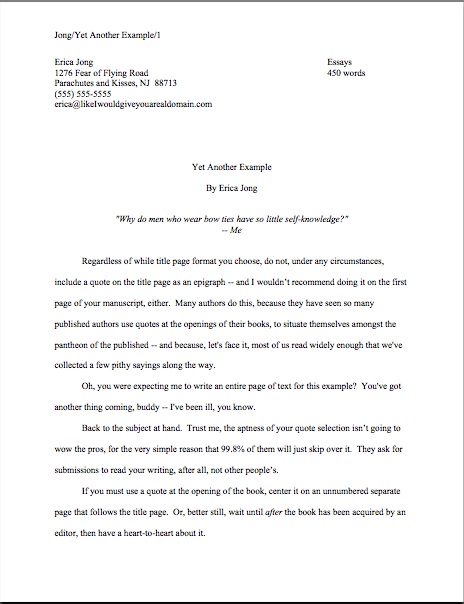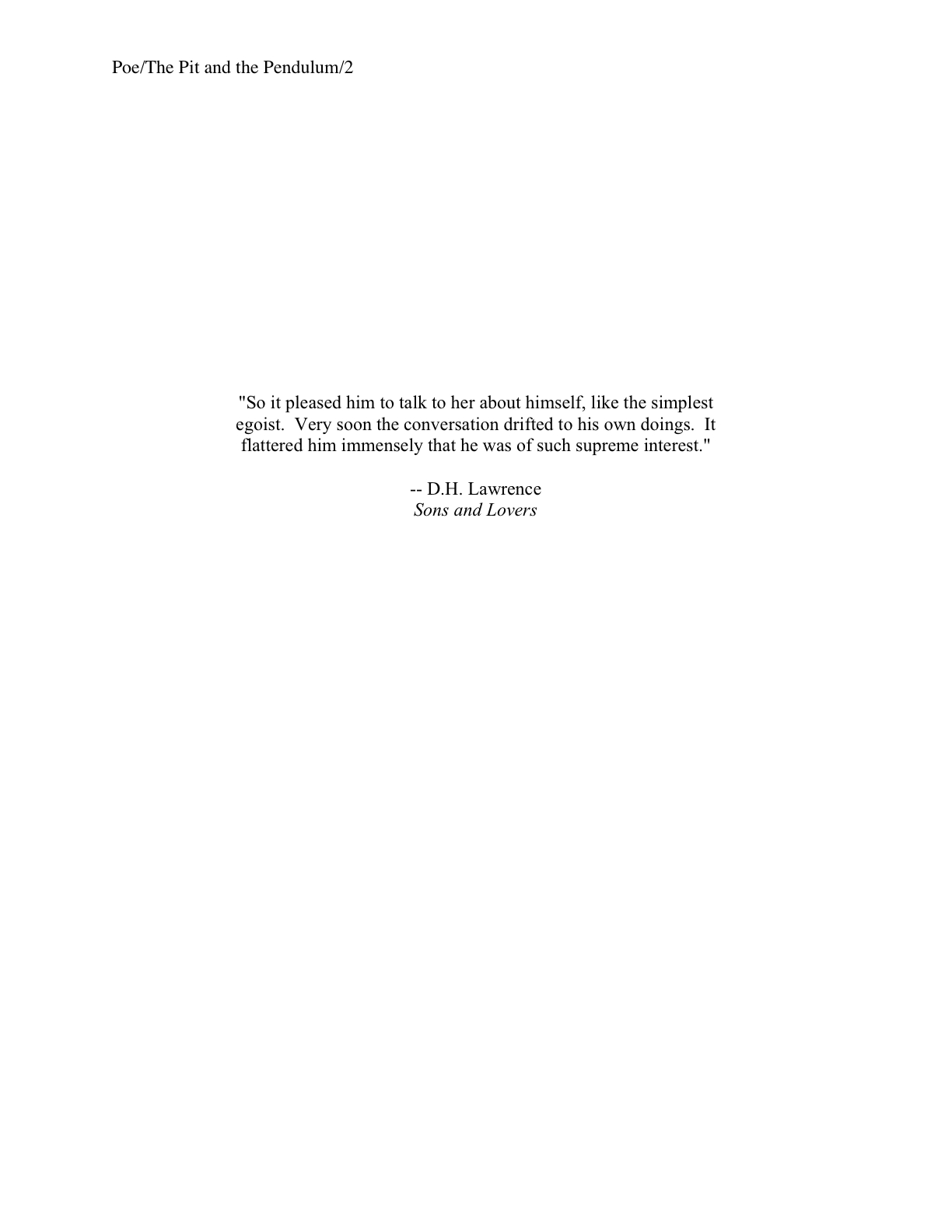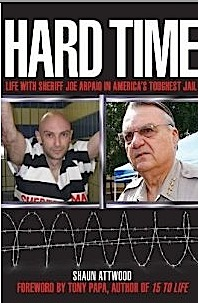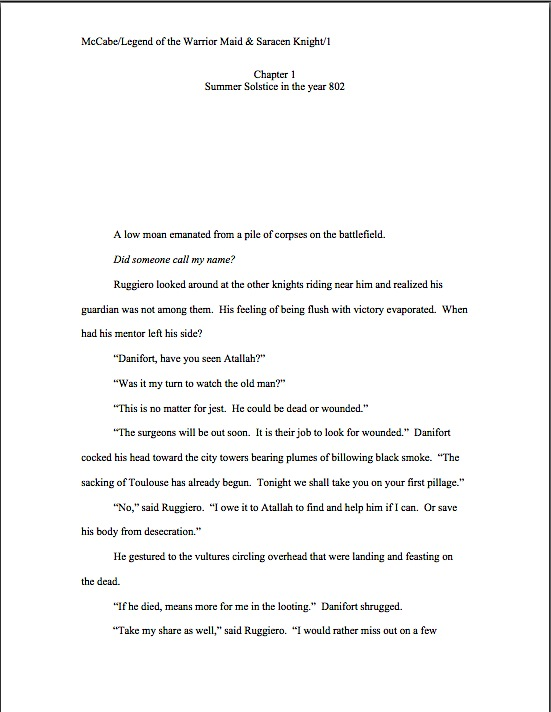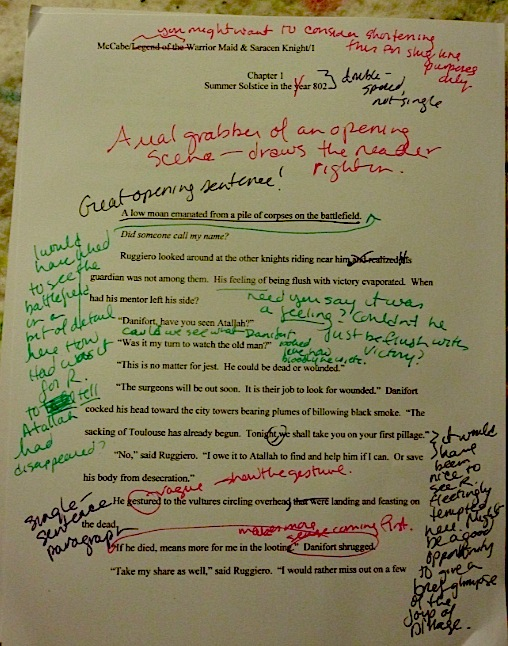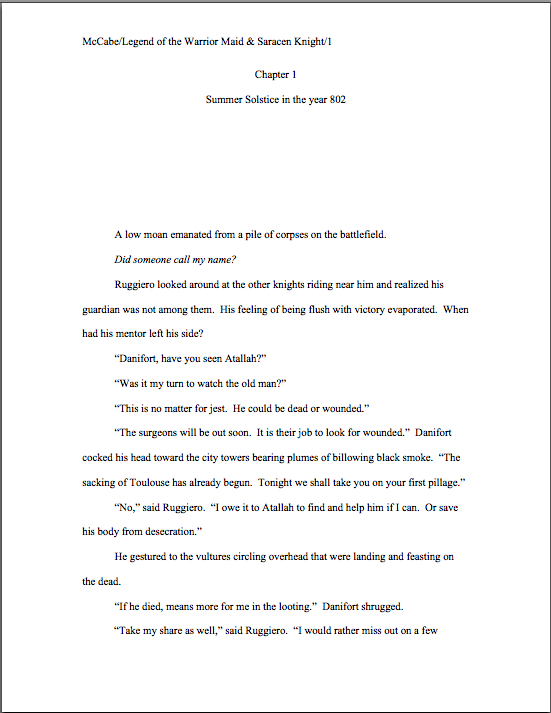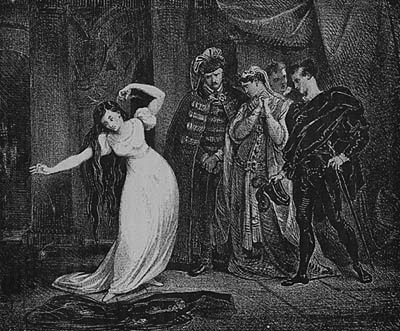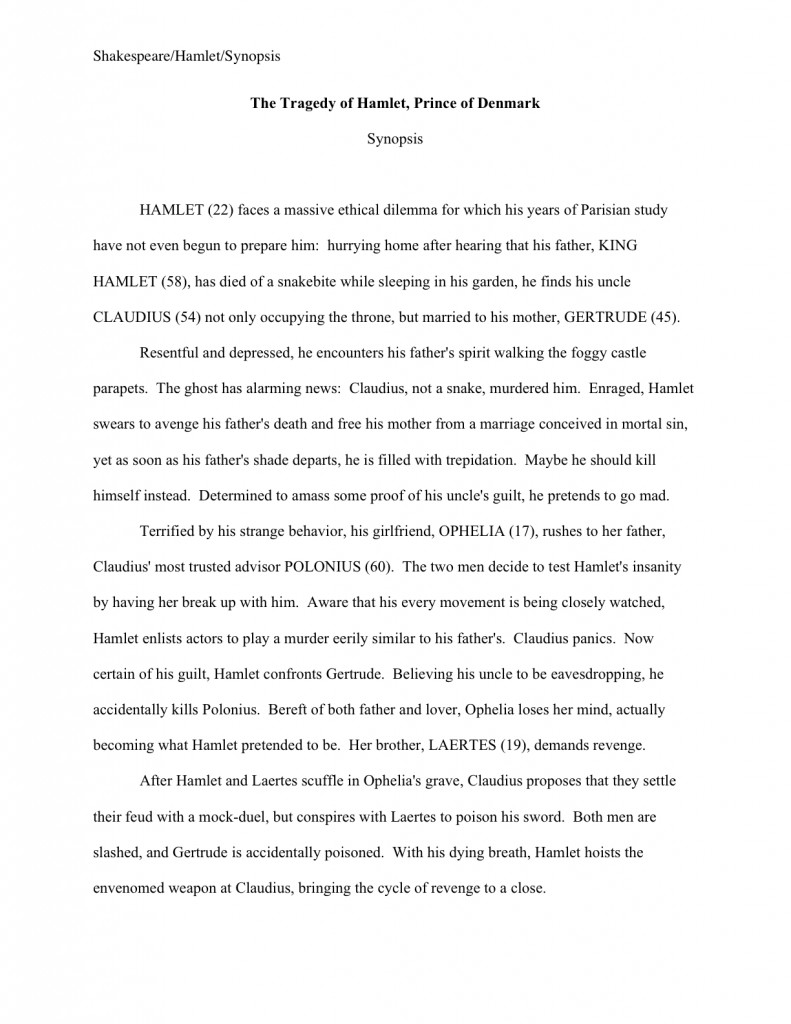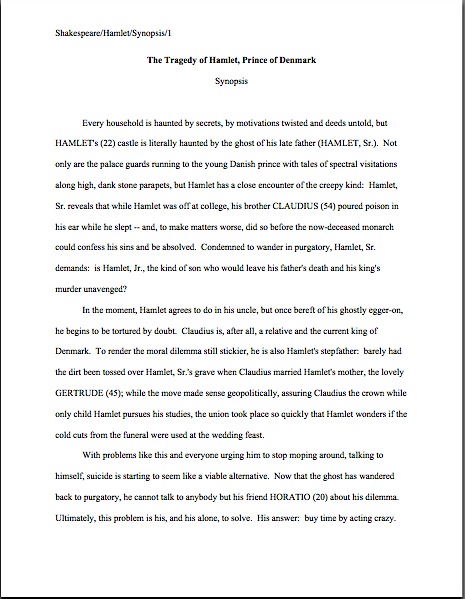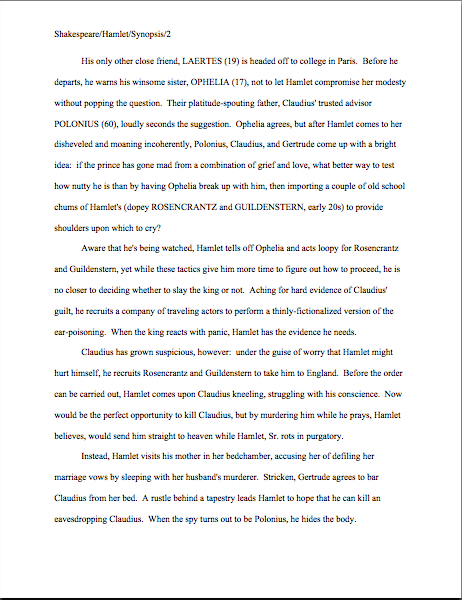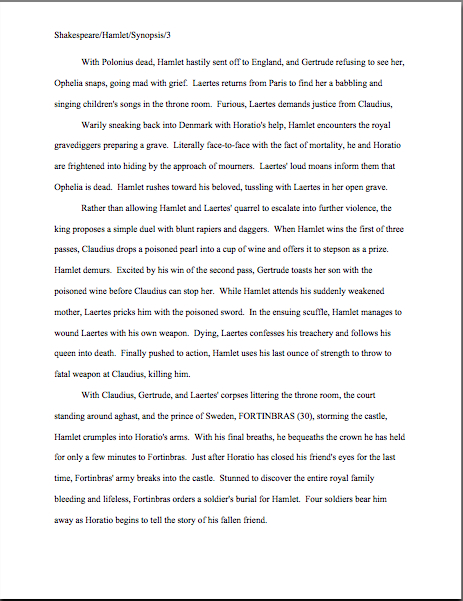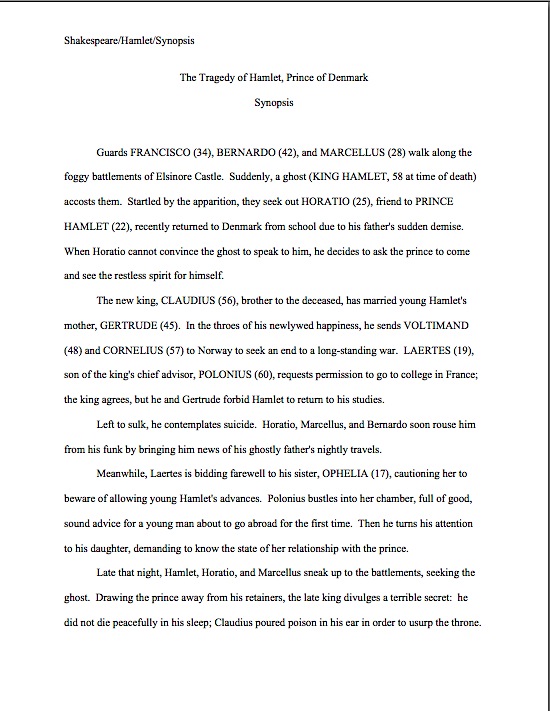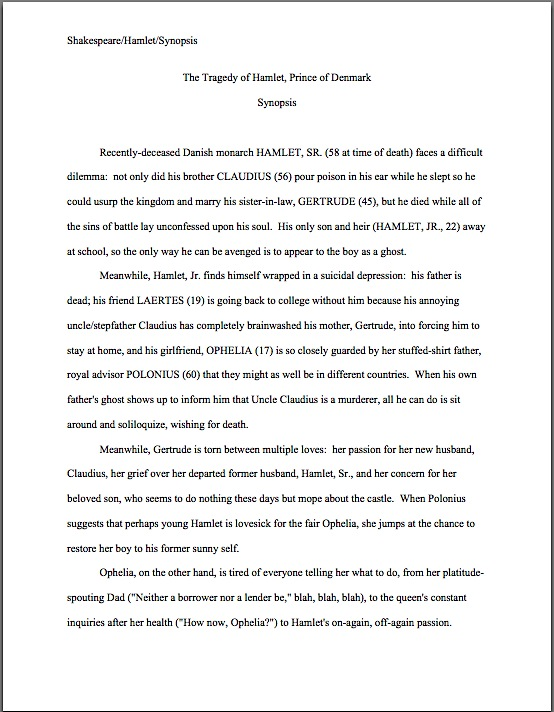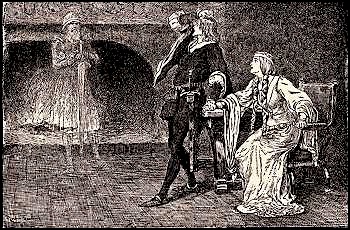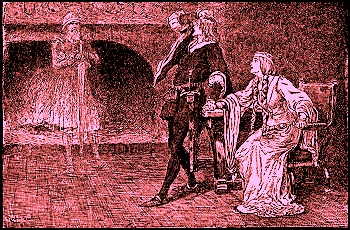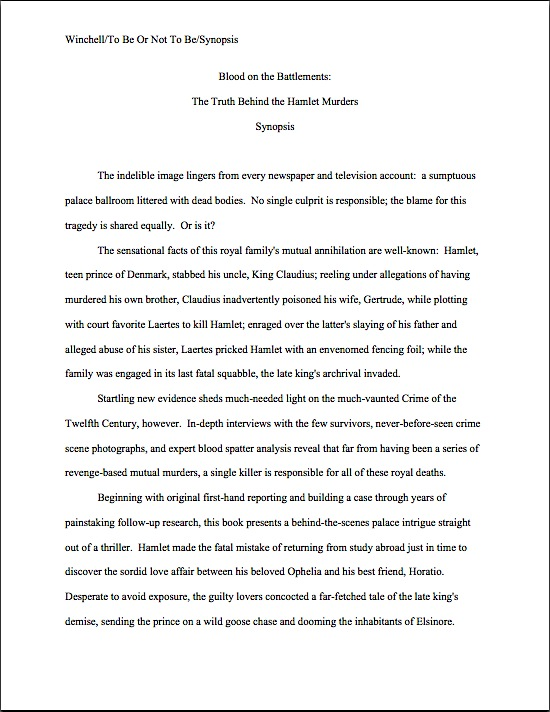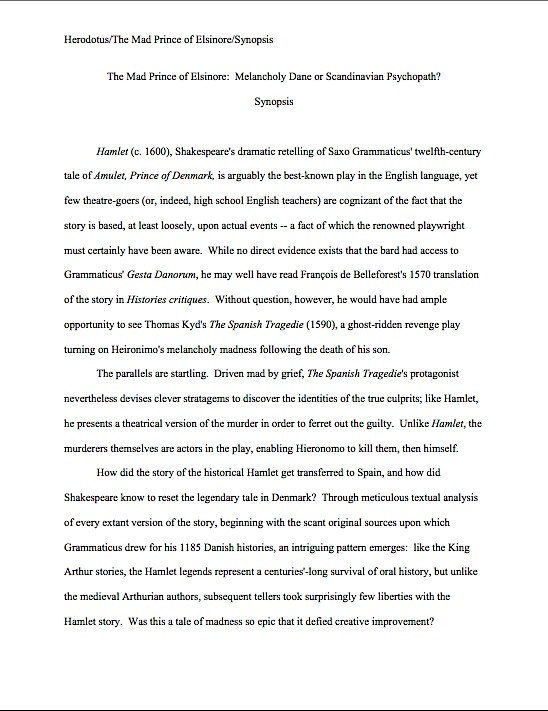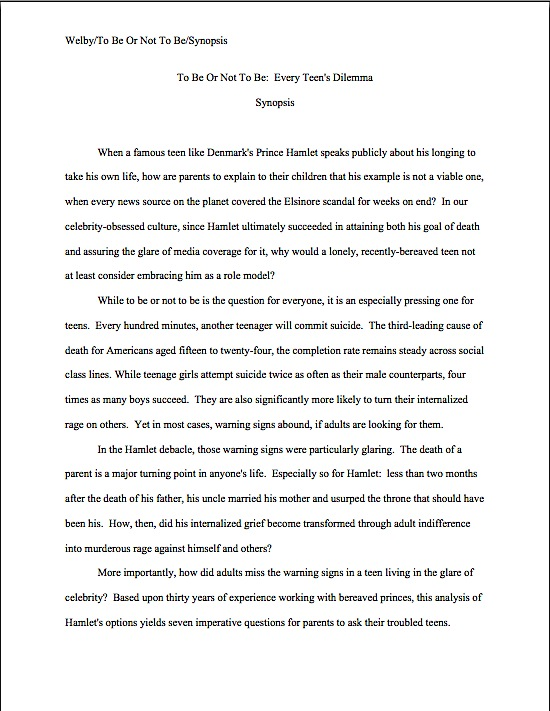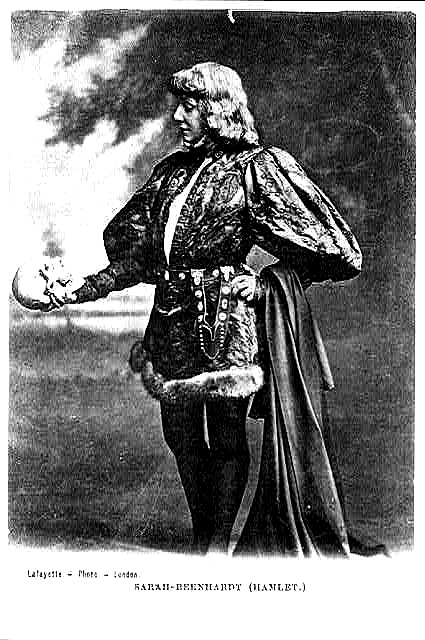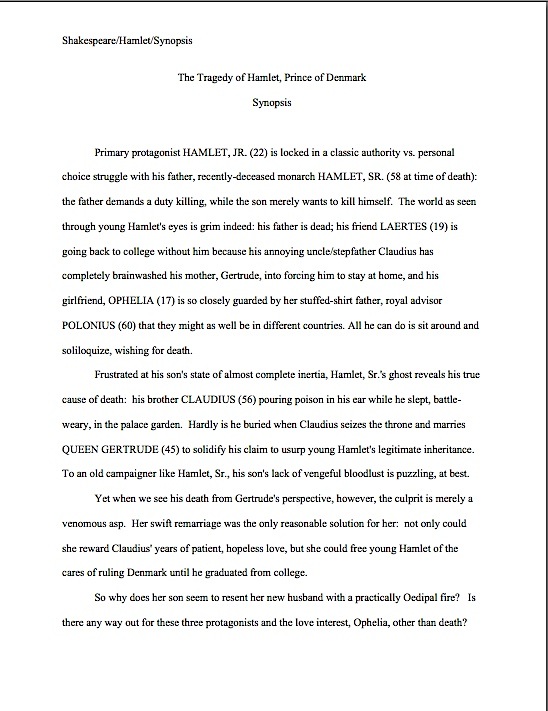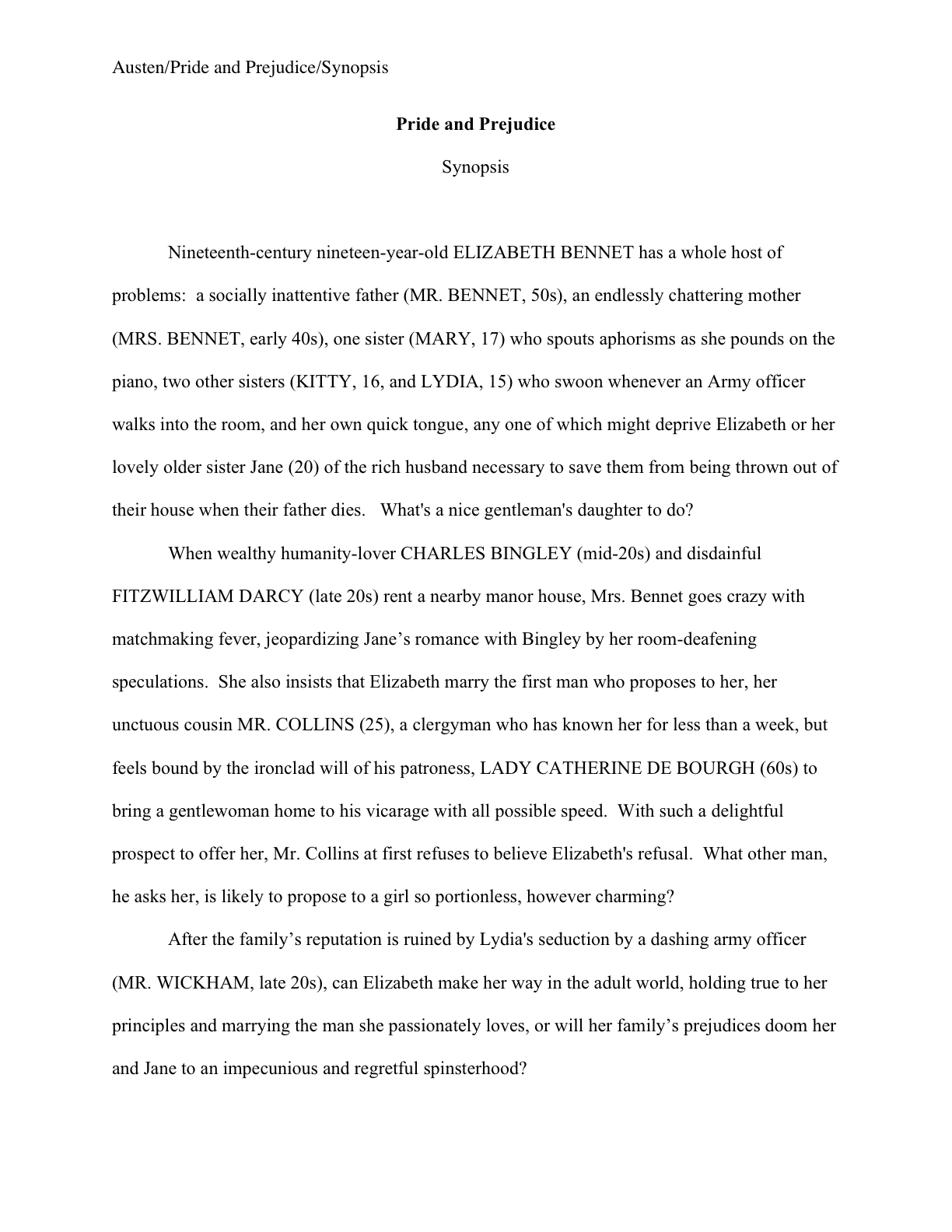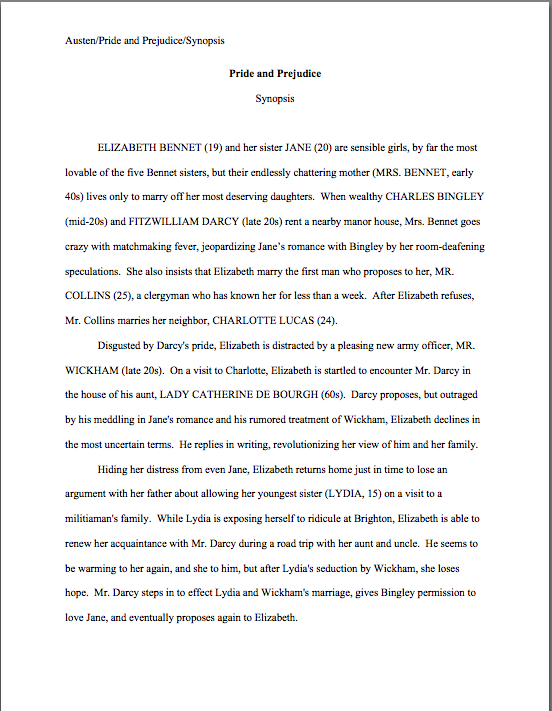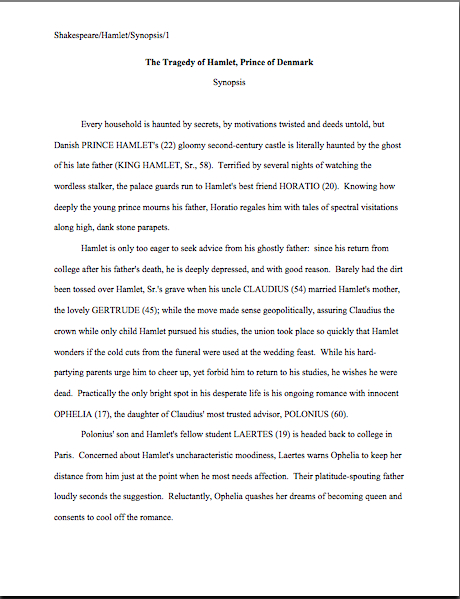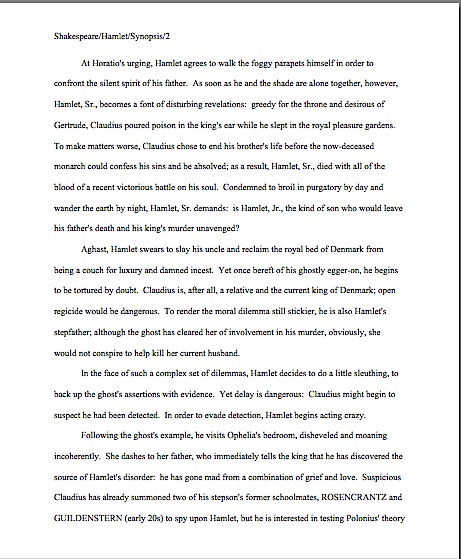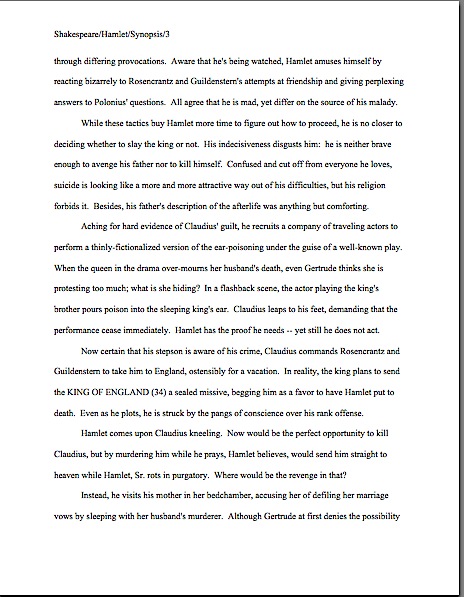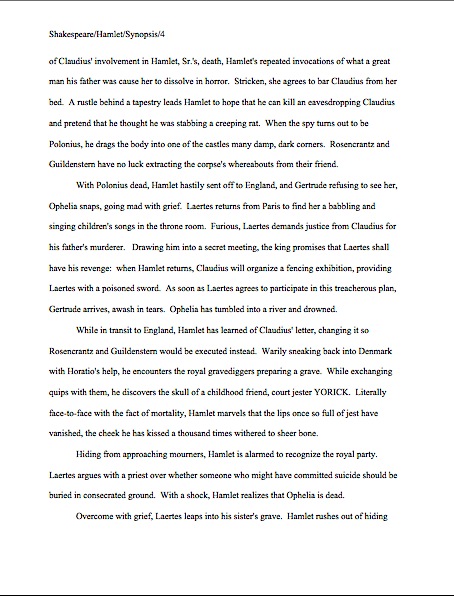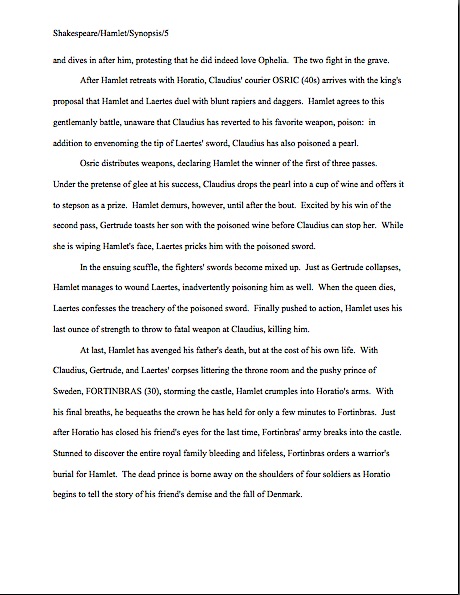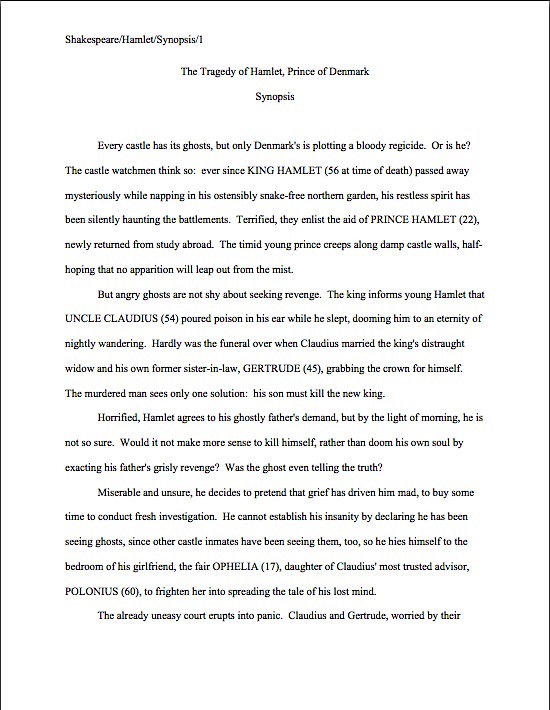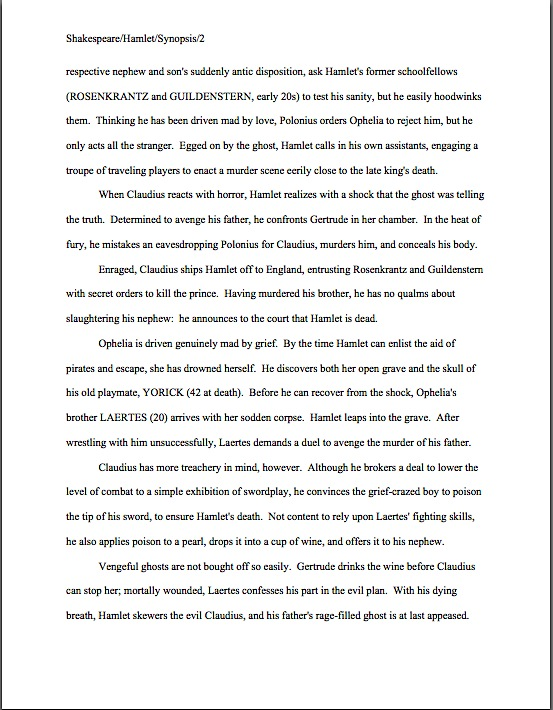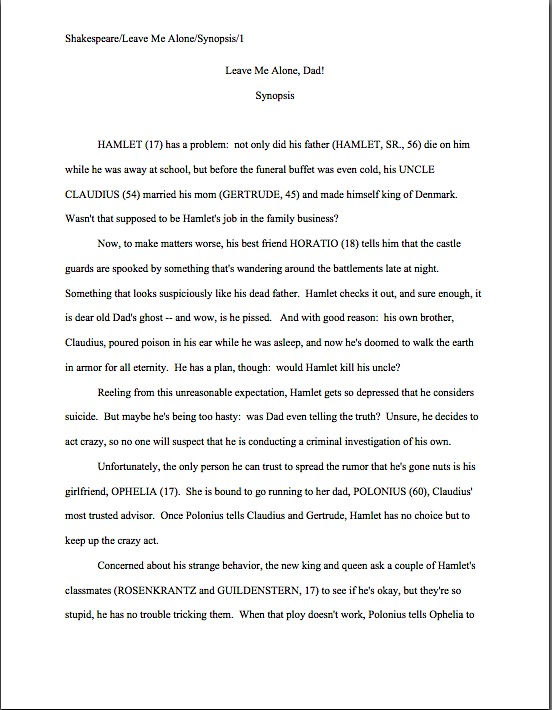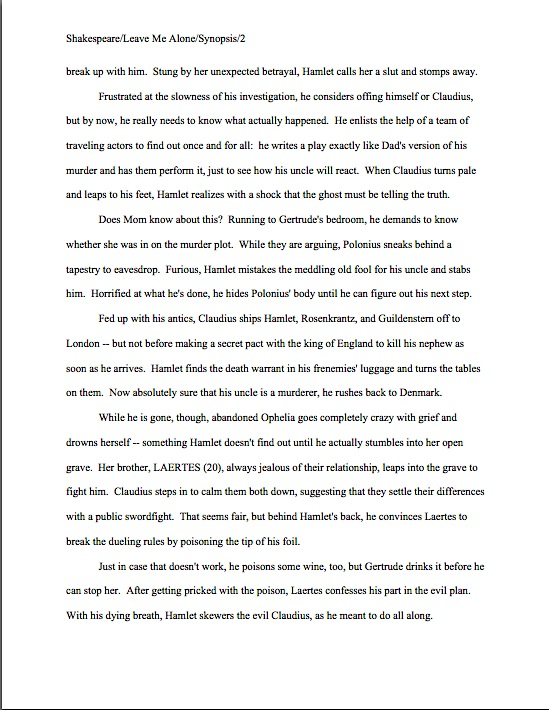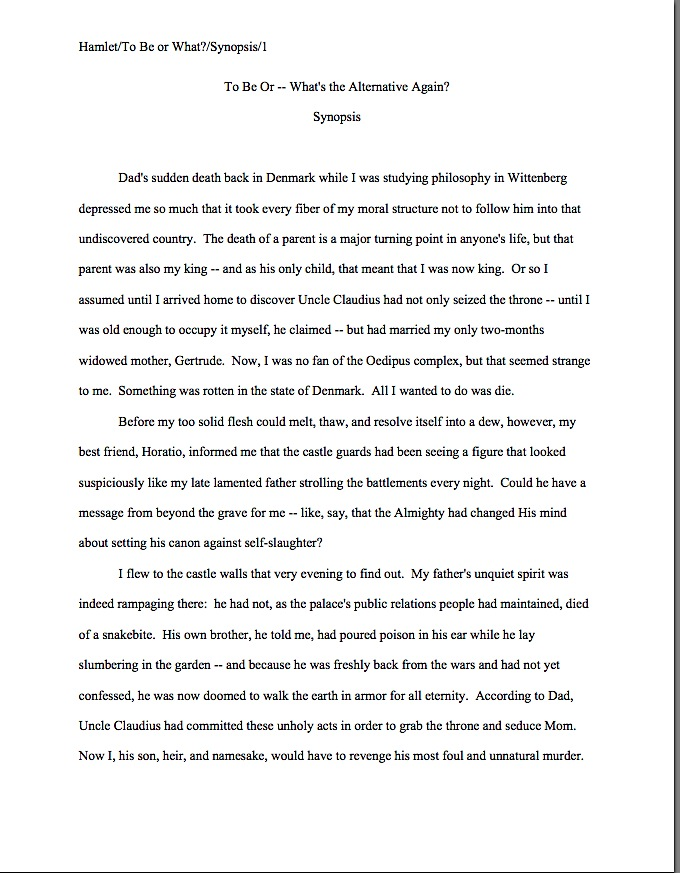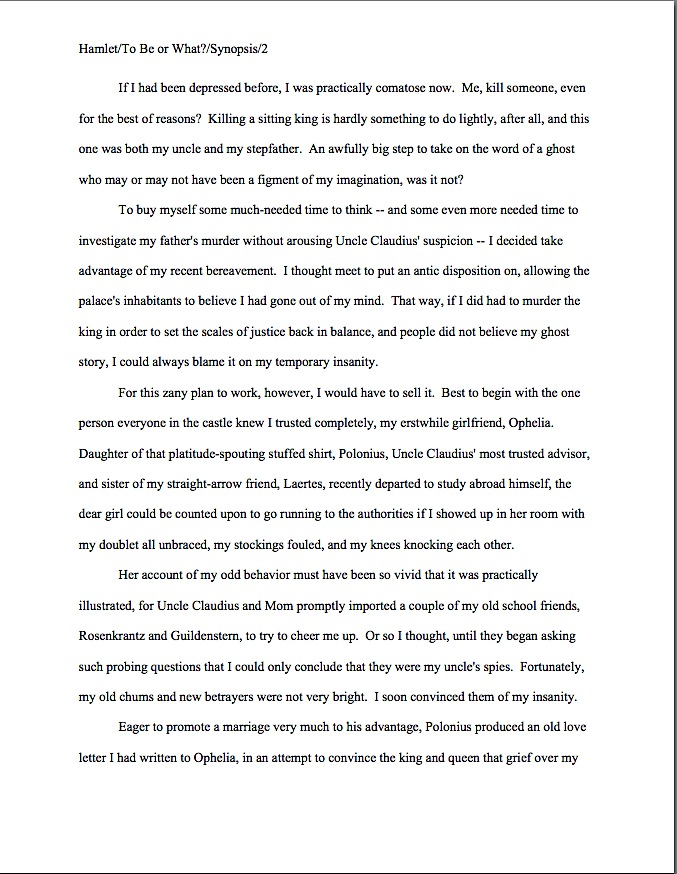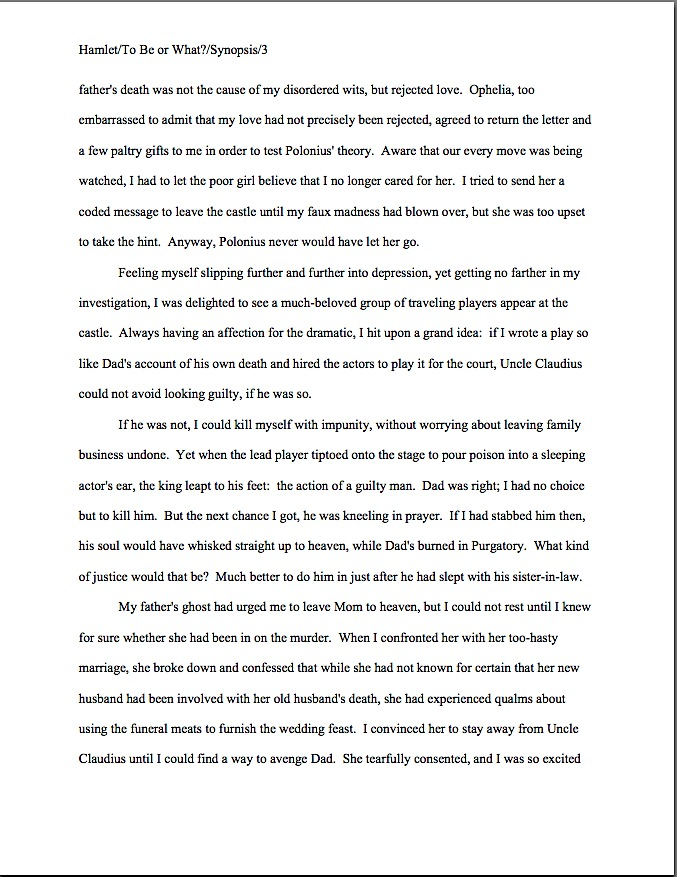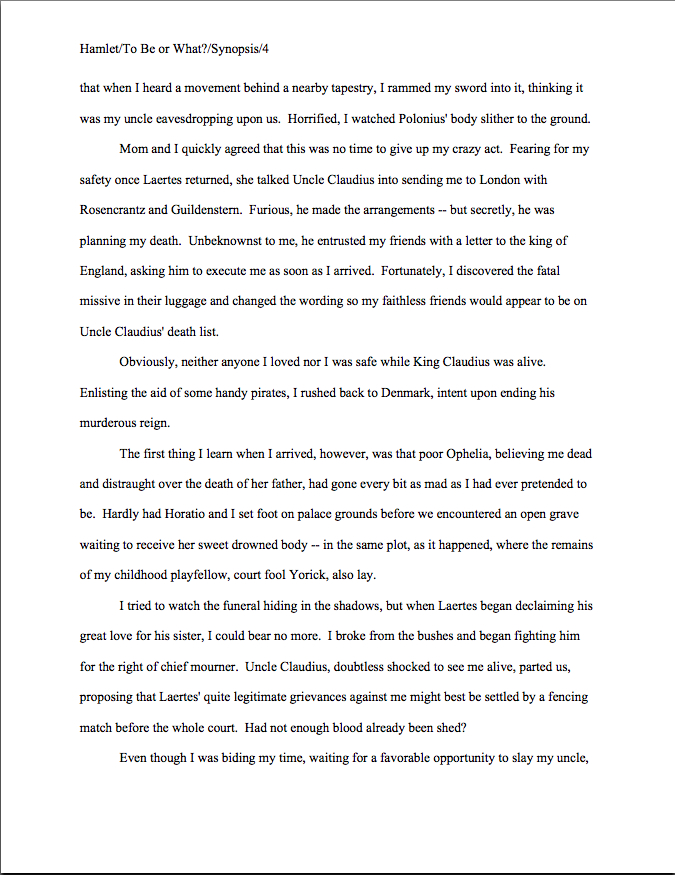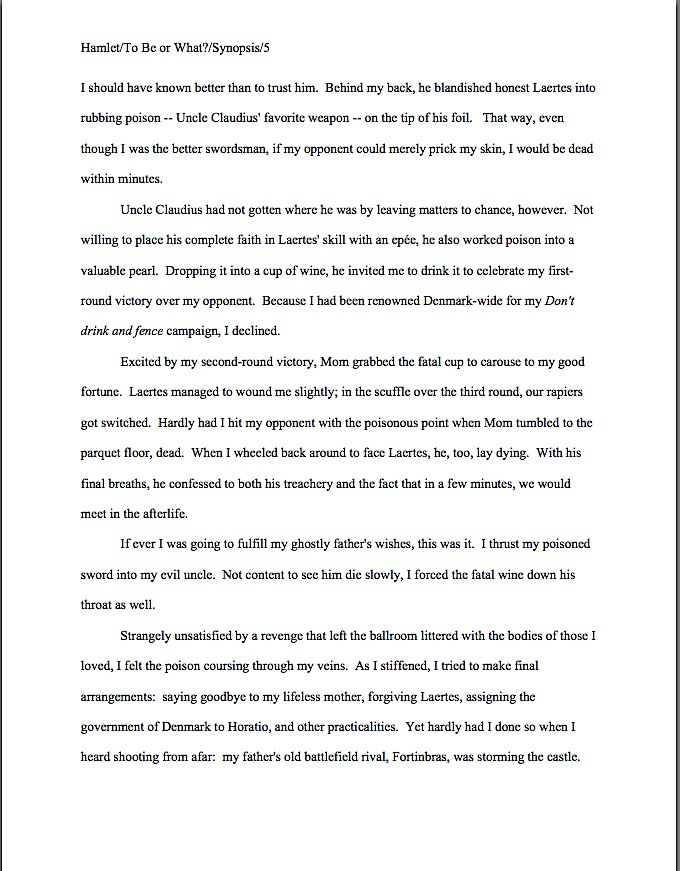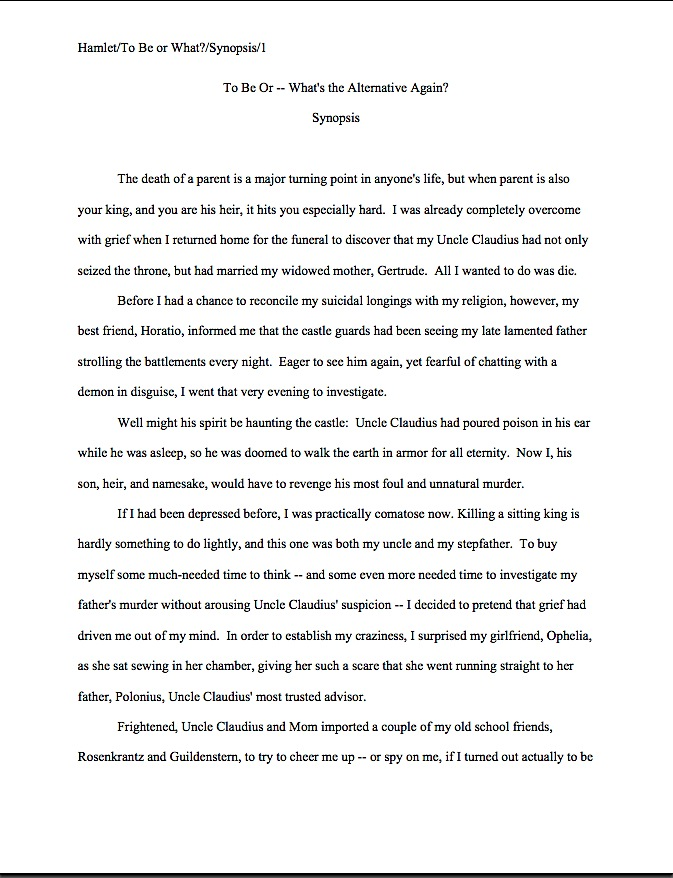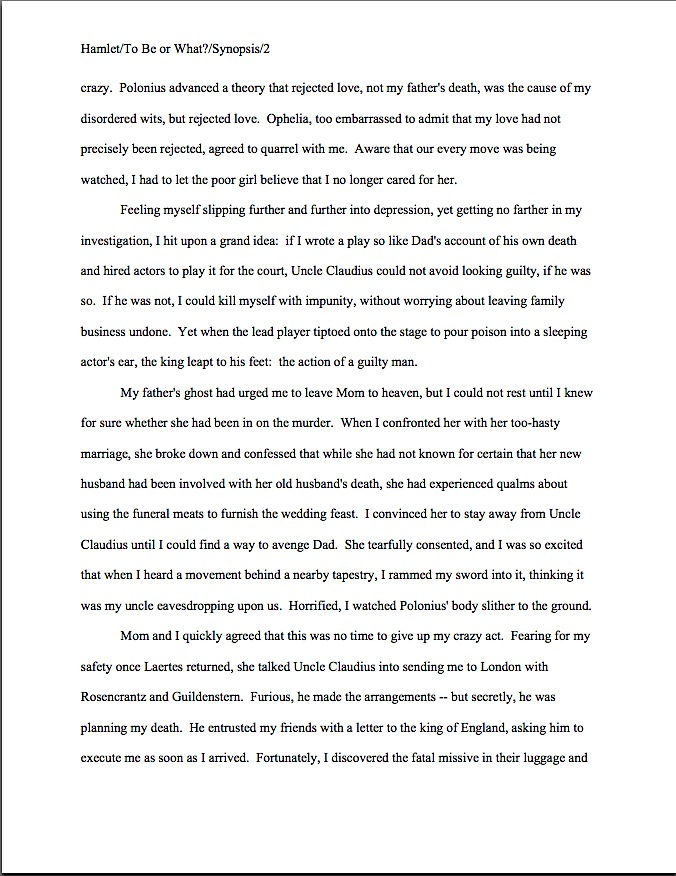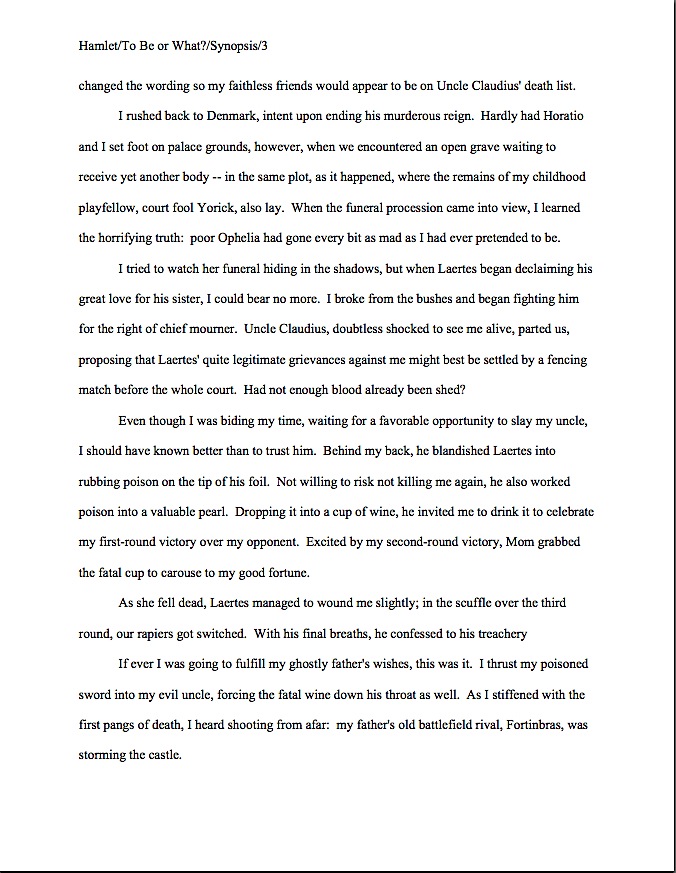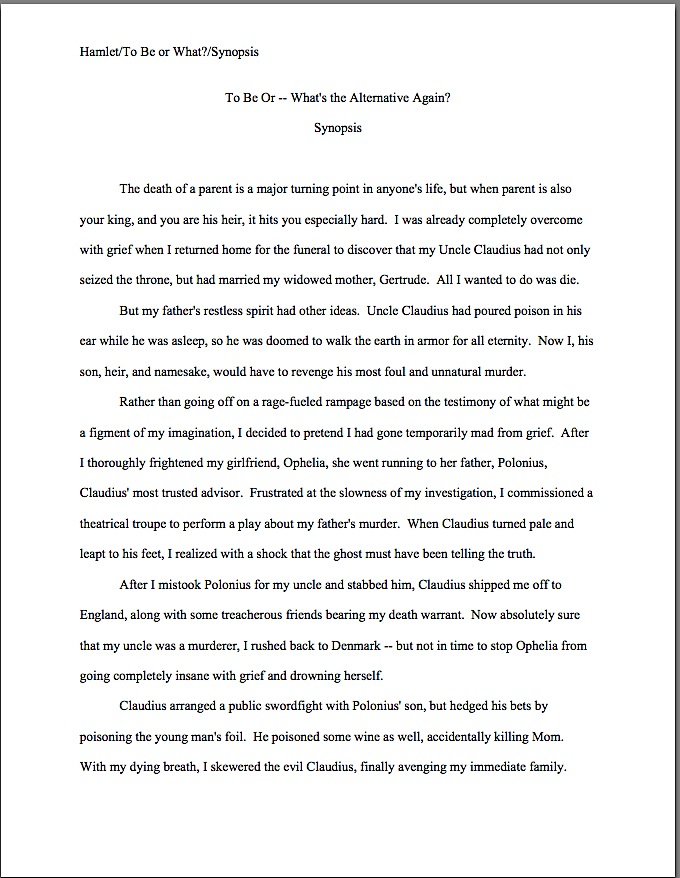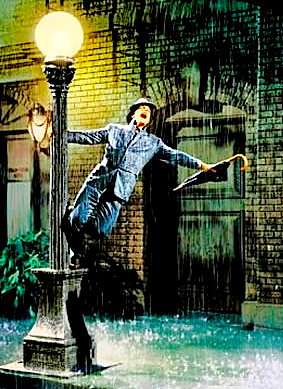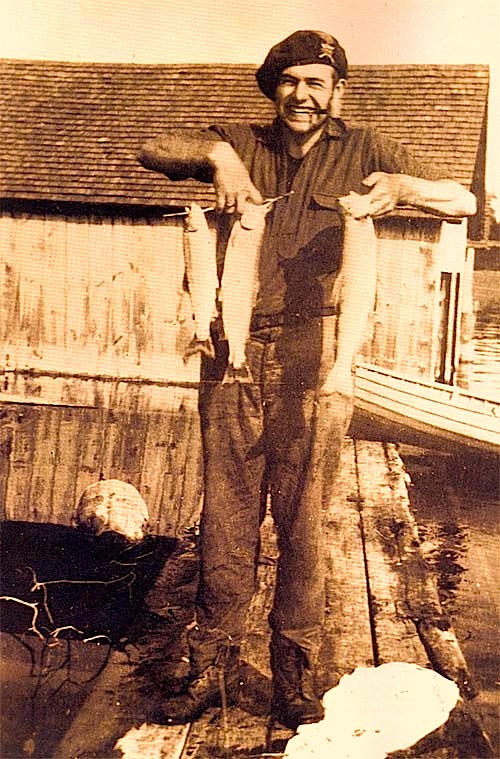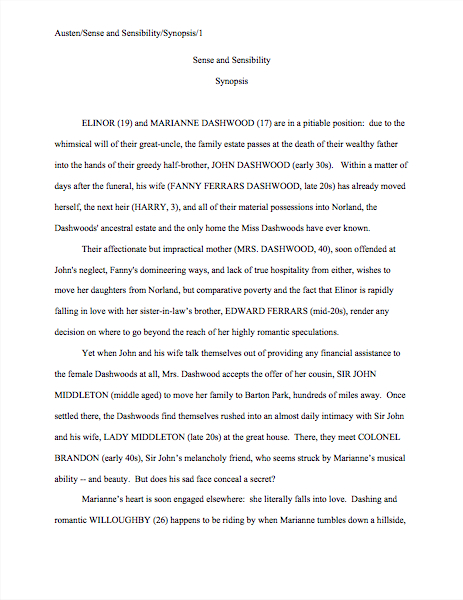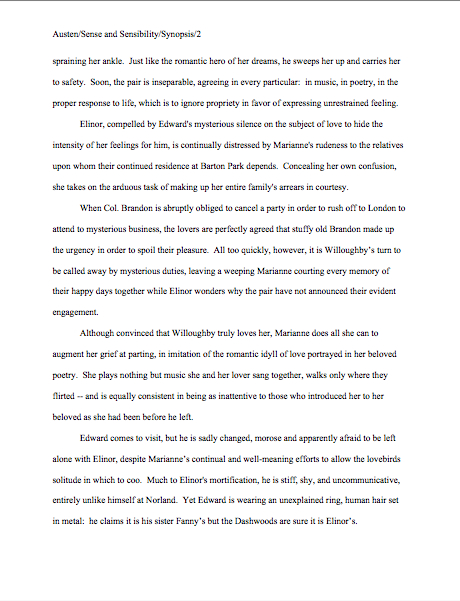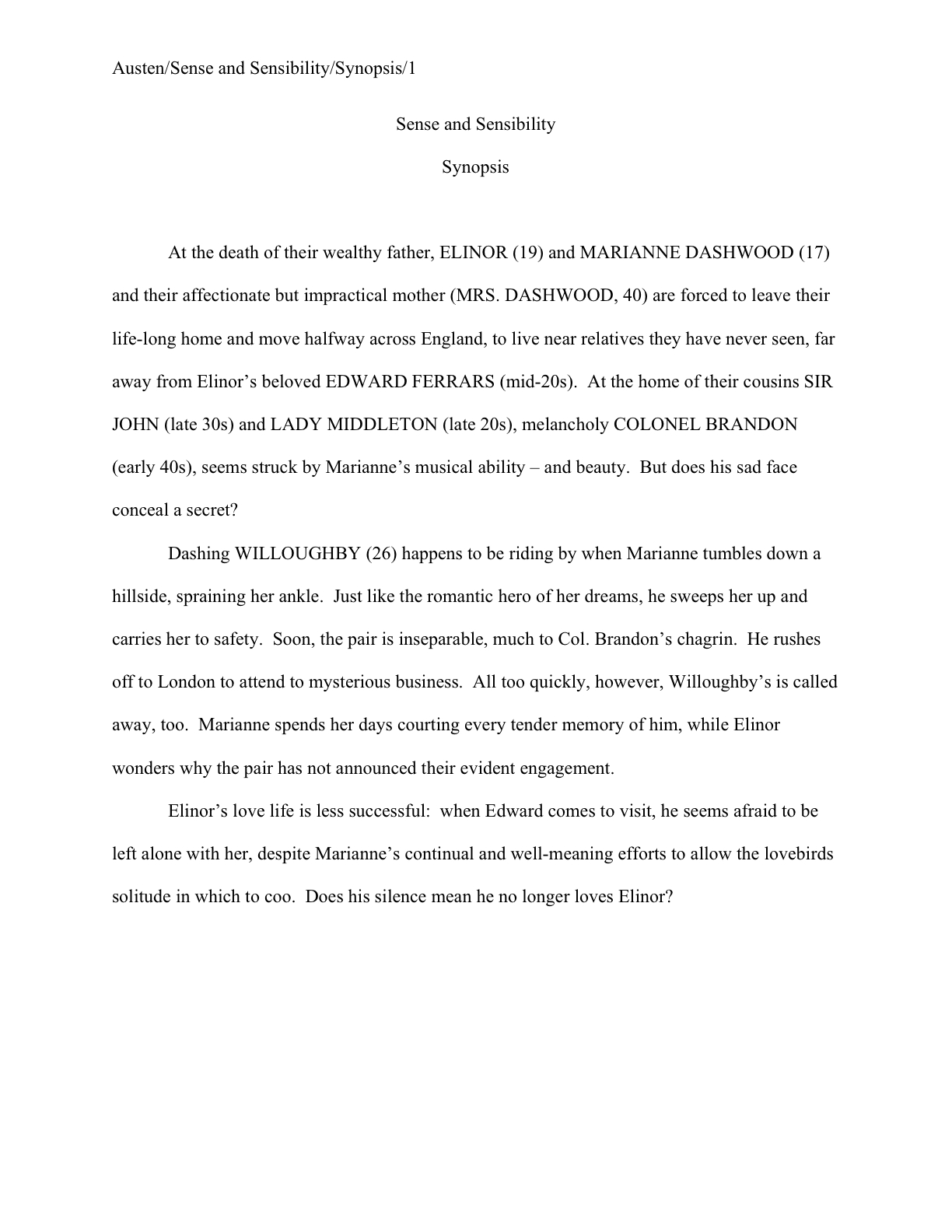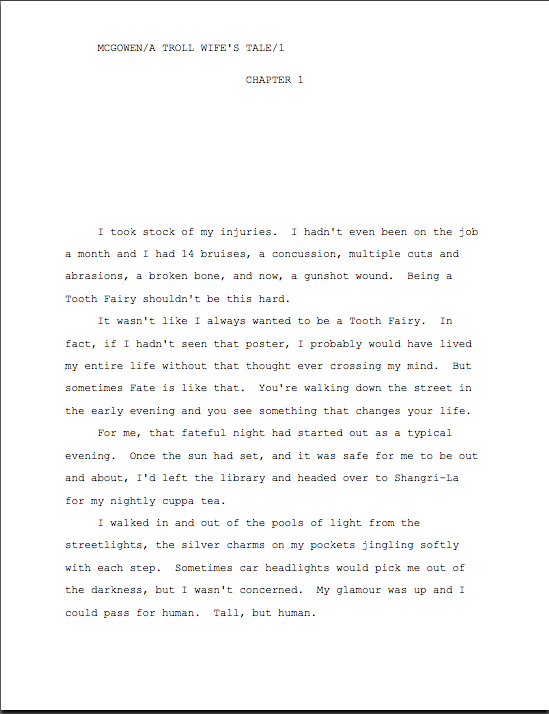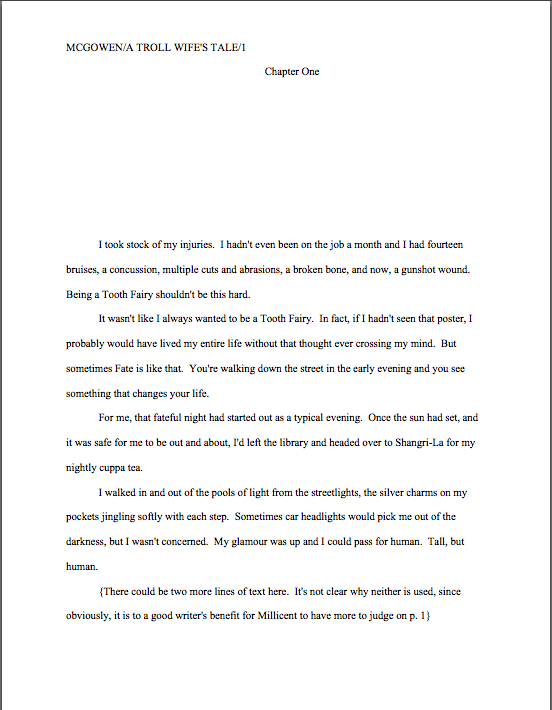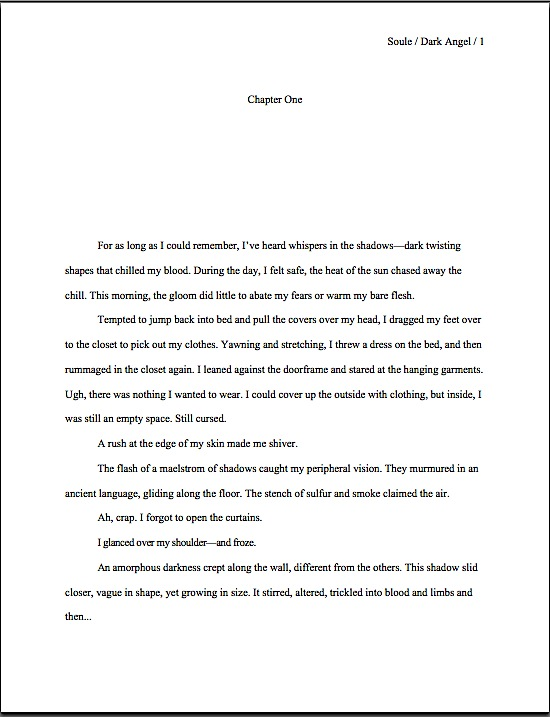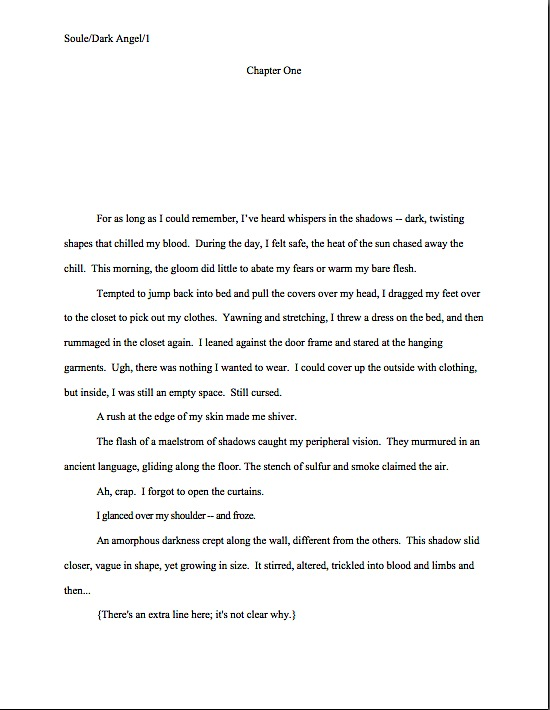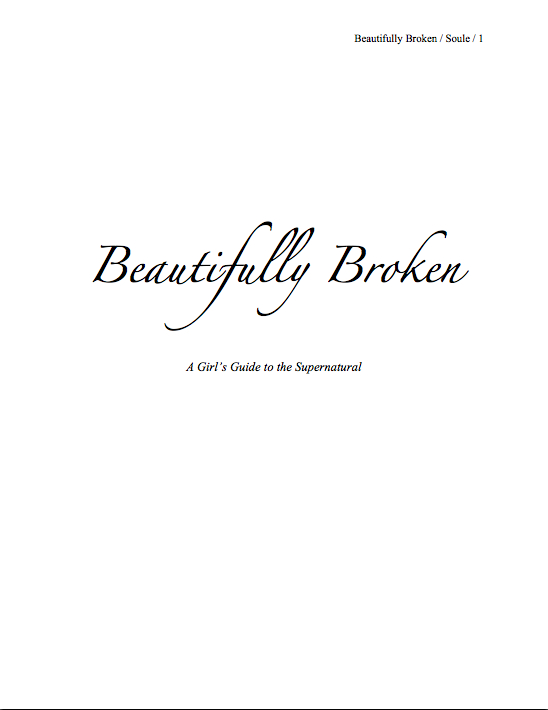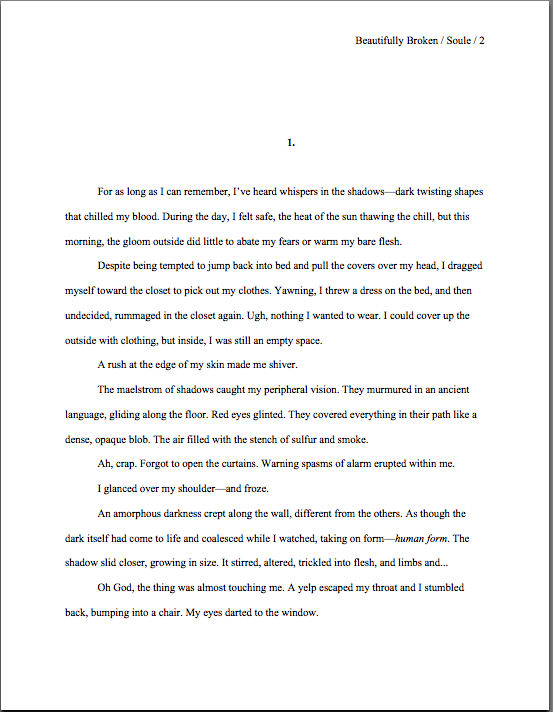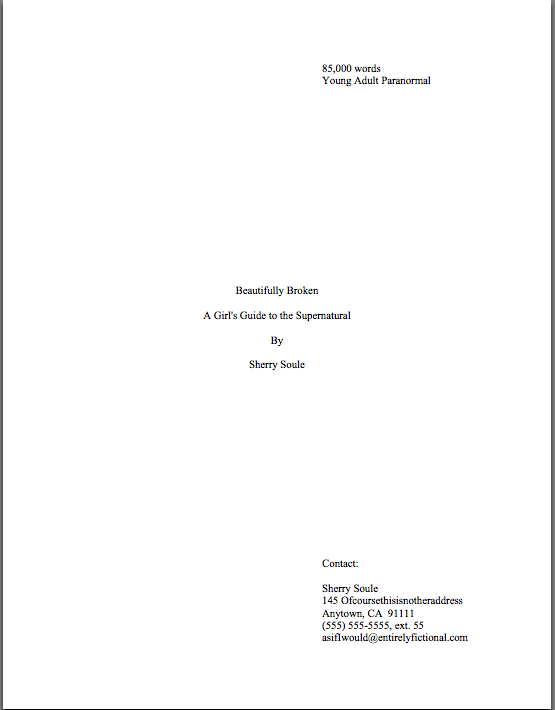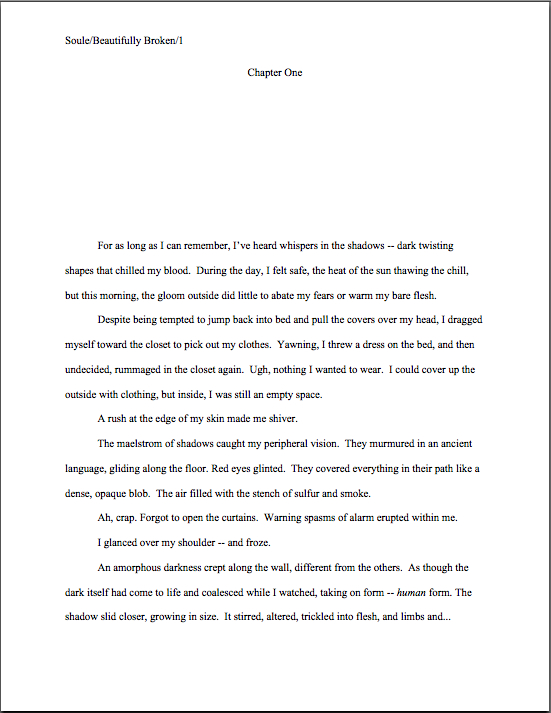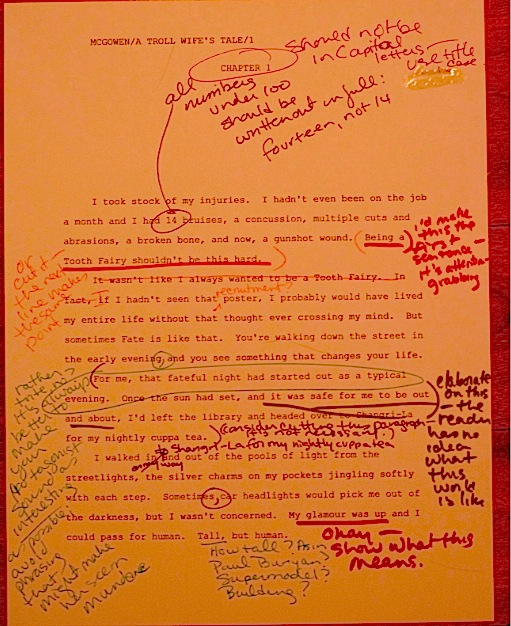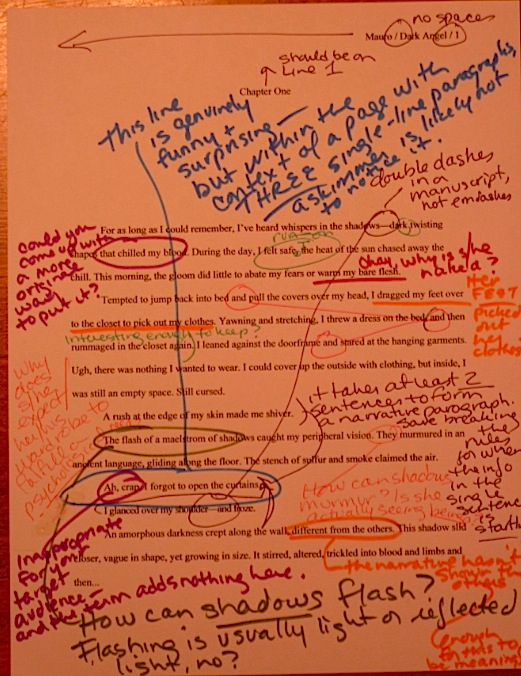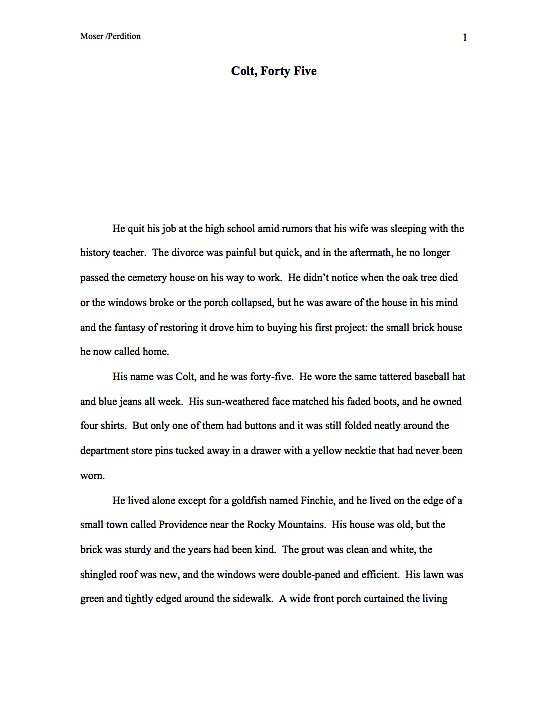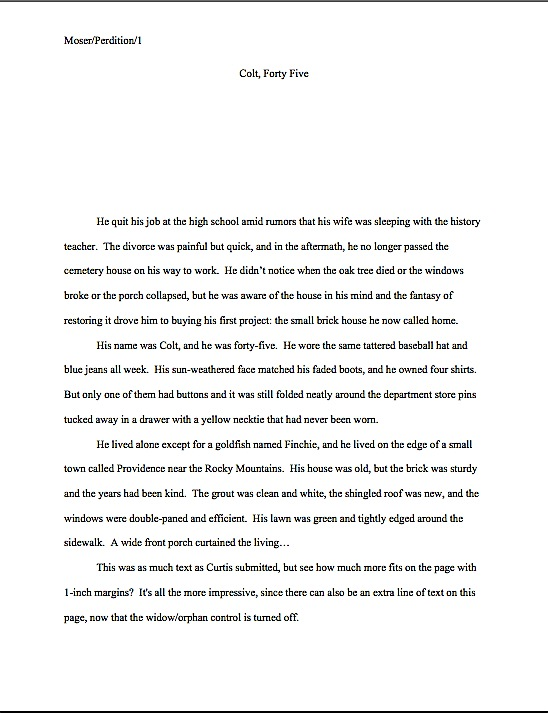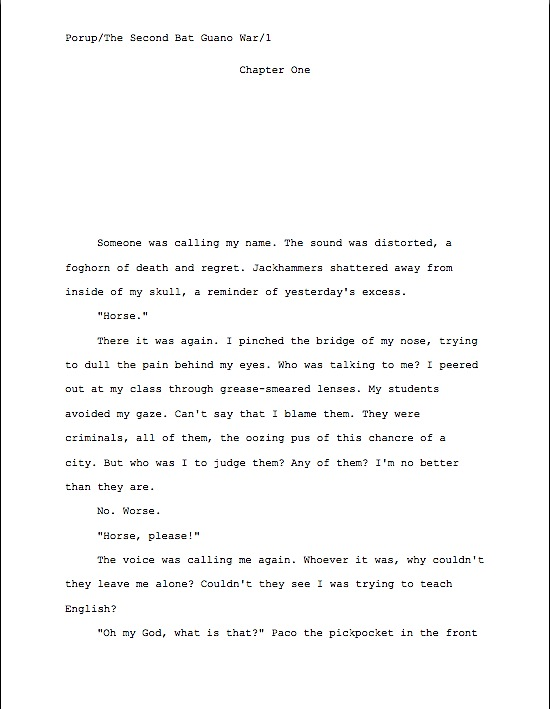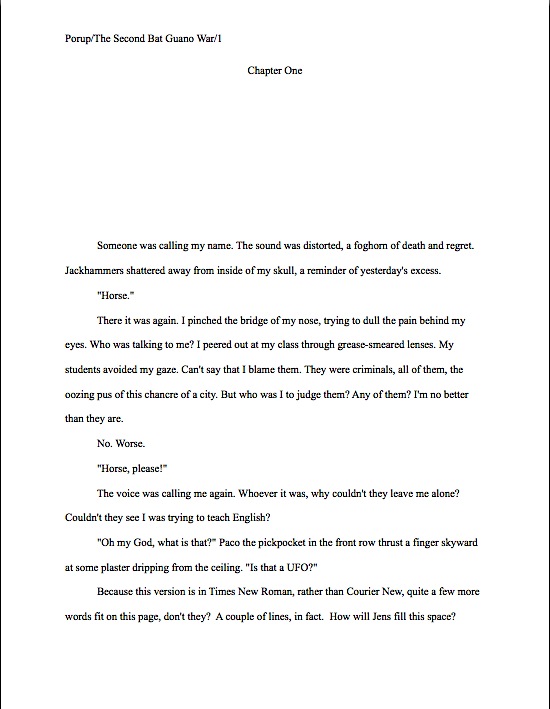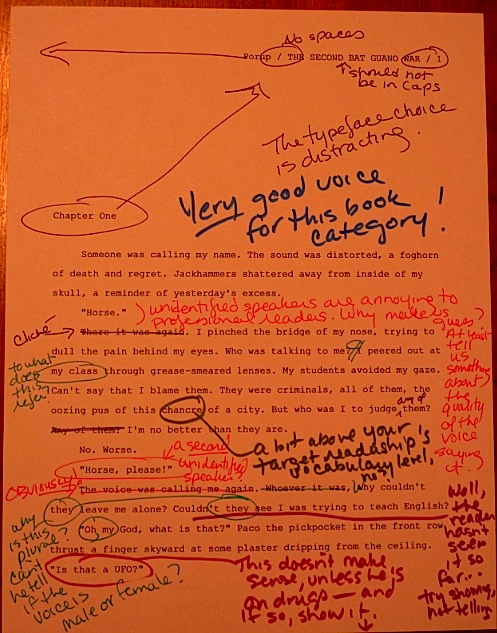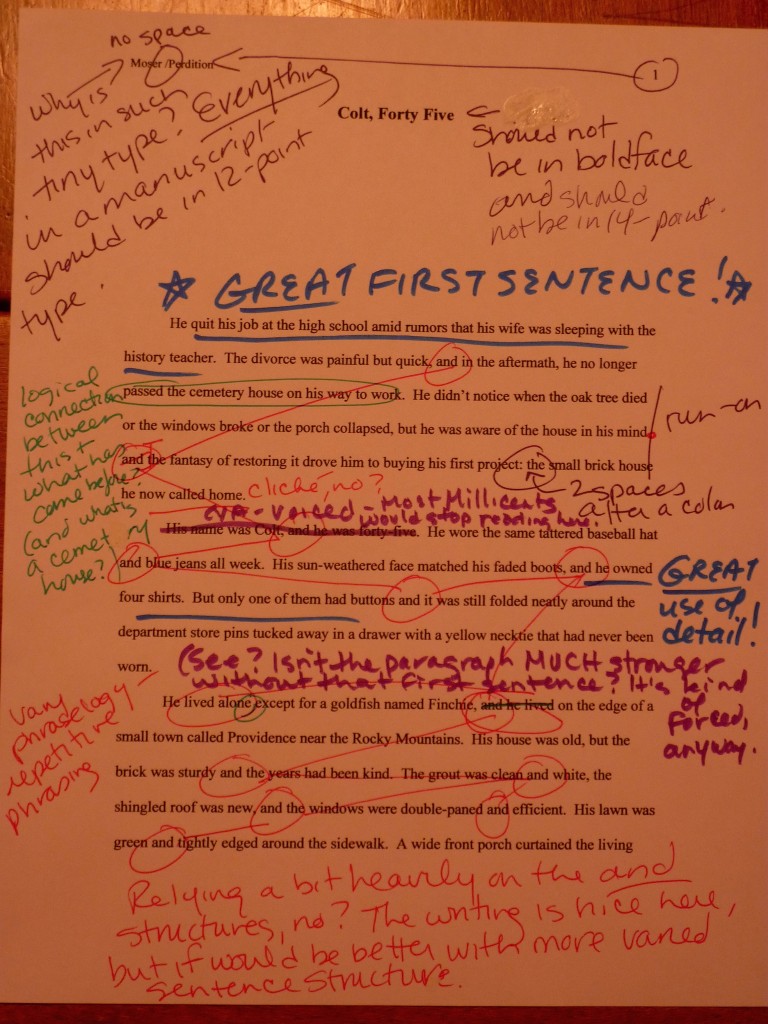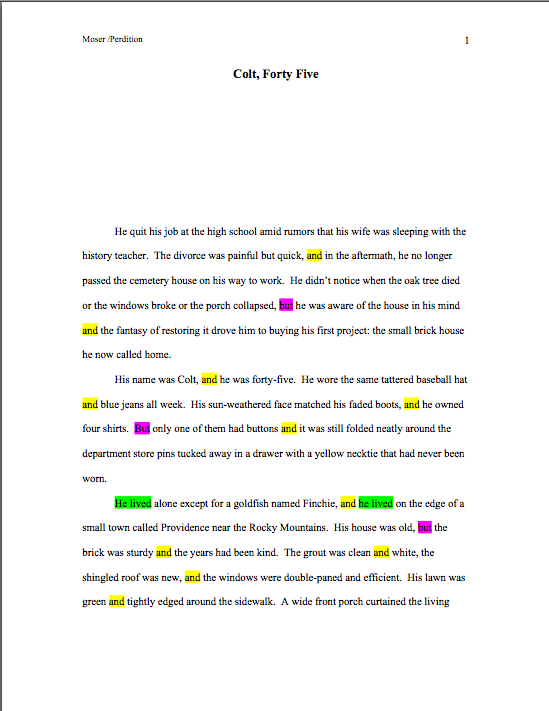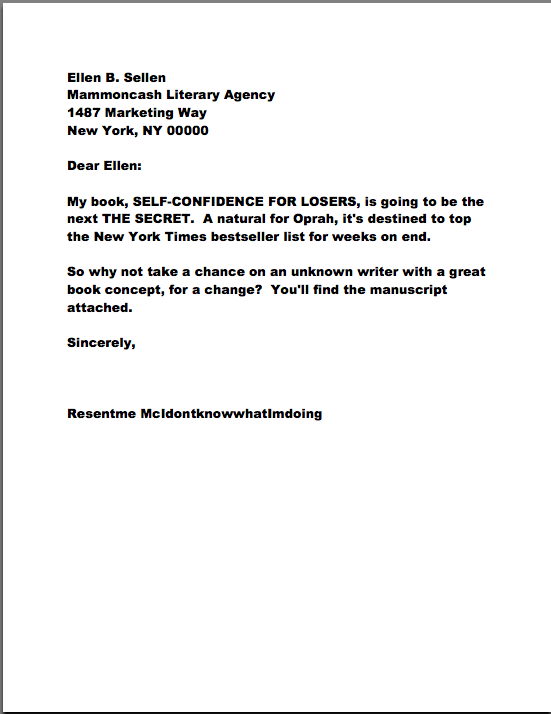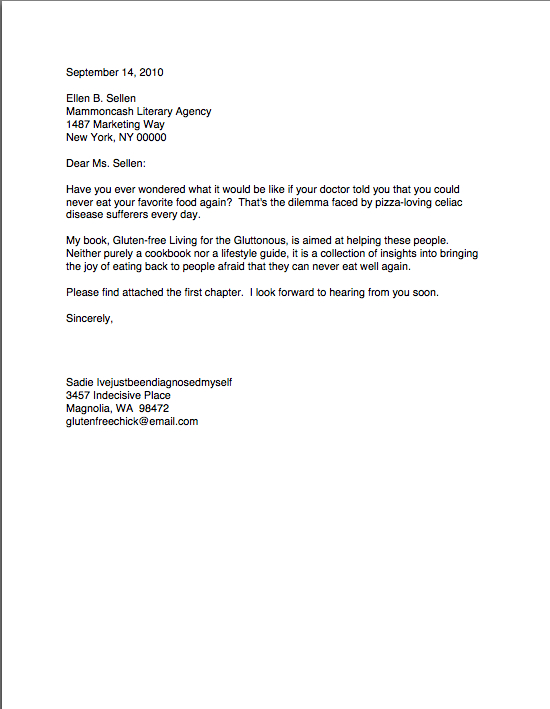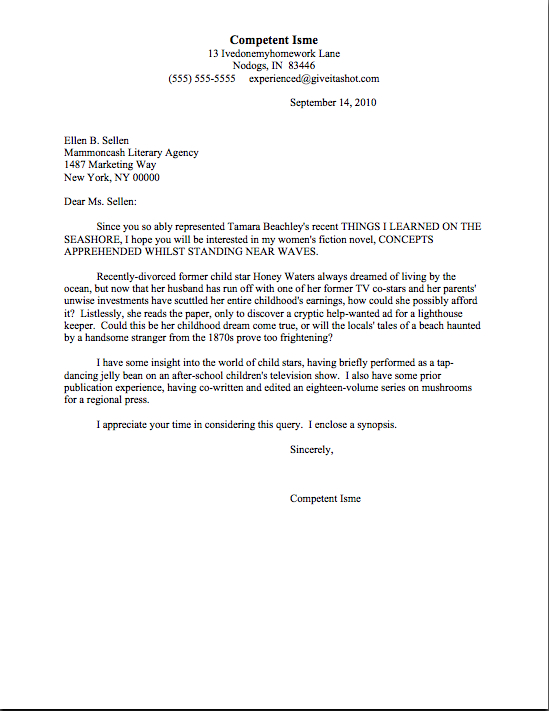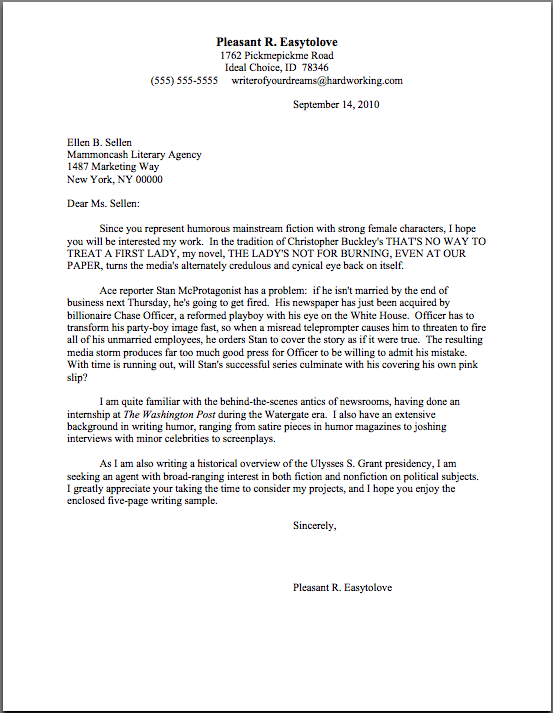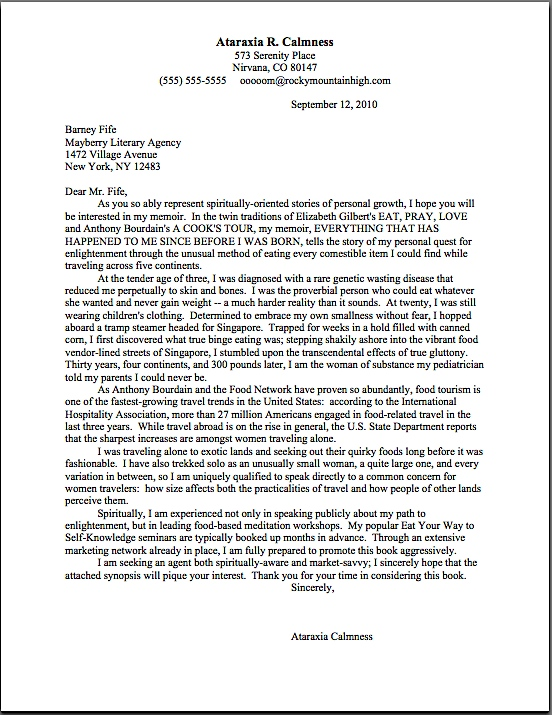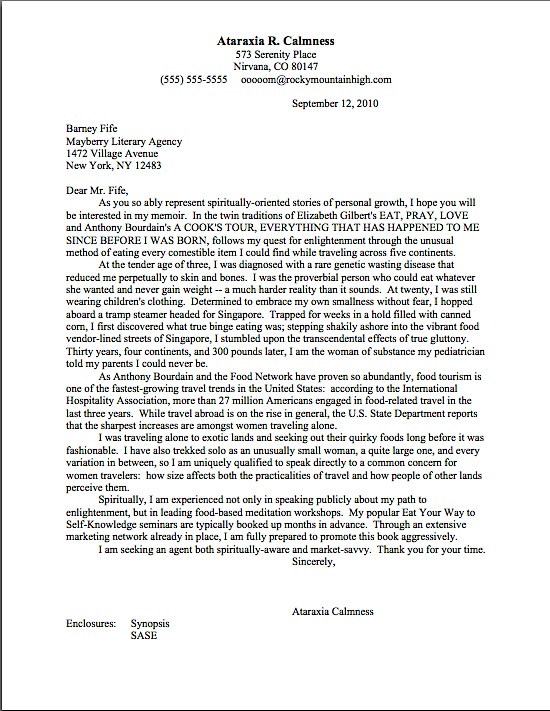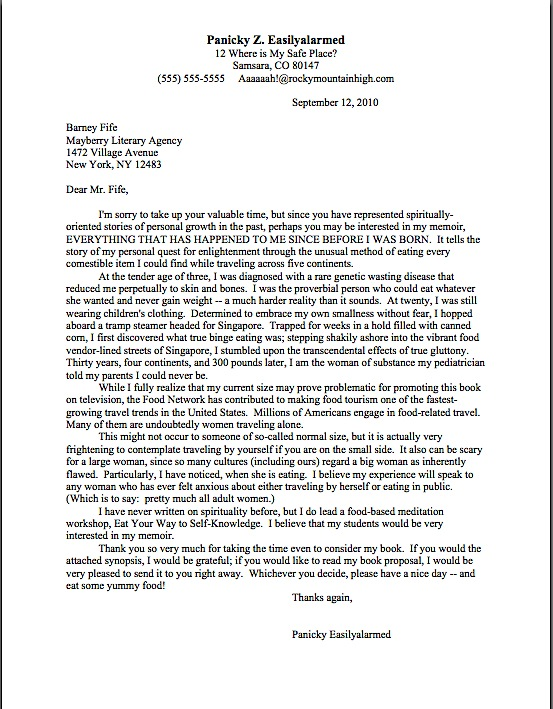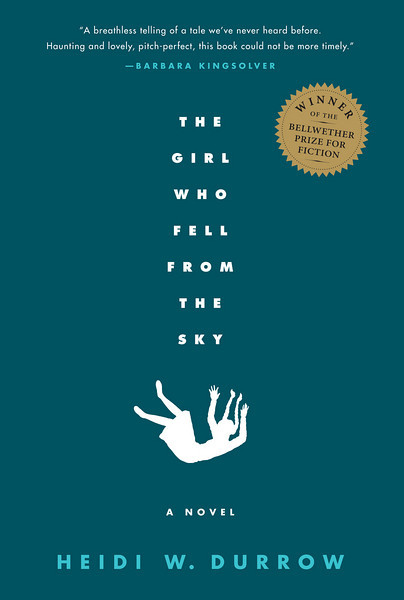
As regular readers of this blog may have figured out by now, I am a creature of enthusiasms. I notice that there wasn’t a great deal of credible, useful advice out there for aspiring writers, at least gathered in one place: I started Author! Author! An intrepid 11-year-old e-mailed me with a great question about breaking into print: I spent the next three weeks blogging about what a new writers should know — over and above the how-tos for querying and submitting that I had been sharing here for years — about how the business side of publishing works (now conveniently gathered under the START WITH THESE POSTS IF YOU ARE BRAND-NEW TO PUBLISHING category on the archive list at right). I conceived a crazy notion about spending Labor Day weekend posting querying tips every eight hours: not only had we undergone a crash course agent-approaching 27 posts later, but by the end of the year, we will have also completed intensive courses in synopsis-writing, constructing an author bio, and formatting a manuscript as well.
So when I discover a terrific new novelist, the results are probably predictable: I wax enthusiastic. It’s probably fair to say, though, that I have never waxed quite this enthusiastic about a first book by an author I didn’t actually know personally before she started to write it.
To what height of enthusiasm did my admiration for Heidi Durrow‘s breathtakingly delicate debut The Girl Who Fell from the Sky lead me, you ask with some well-justified trepidation? When I met Heidi recently at a writers’ conference where we both happened to be presenting, I asked her if she would be willing not only to give all of you lovely people some pointers on breaking into the hyper-competitive high literary fiction market, but if she would also join me in awarding the literary contest prizes I know everybody at Author! Author! likes best, feedback on readers’ actual writing.
Hold onto your hats, everybody, because she very graciously said yes on both counts.
That’s right, campers — as Author! Author!’s first act of 2011, we’re going to be recapping 2010’s immensely popular Great First Page Made Even Better contest. Only this time, the better to celebrate the January 11 paperback release of Heidi’s novel, we’re going to be focusing on literary fiction, memoir, and all of those brilliantly maddening novels that don’t quite fit neatly into a single book category.
May I assume that gargantuan gasp of astonishment I just heard echoing around the cosmos means that those of you who don’t like being shoved into predetermined categories are pleased that for once, your work will not be disqualified on sight?
It seems only appropriate, since Heidi’s book is all about defying expectations and neat categorization. Take a gander at the publisher’s blurb:
Rachel, the daughter of a Danish mother and a black G.I., becomes the sole survivor of a family tragedy after a fateful morning on their Chicago rooftop.
Forced to move to a new city, with her strict African-American grandmother as her guardian, Rachel is thrust for the first time into a mostly black community, where her light brown skin, blue eyes, and beauty bring a constant stream of attention her way. It’s there, as she grows up and tries to swallow her grief, that she comes to understand how the mystery and tragedy of her mother might be connected to her own uncertain identity.
This searing and heartwrenching portrait of a young biracial girl dealing with society’s ideas of race and class is the winner of the Bellwether Prize for best fiction manuscript addressing issues of social justice.
Actually, I rather prefer the blurb from the author’s website; I think it speaks better to readers. Here’s a peek at it — and at Heidi, while we’re at it:
This debut novel tells the story of Rachel, the daughter of a Danish mother and a black G.I. who becomes the sole survivor of a family tragedy.
With her strict African American grandmother as her new guardian, Rachel moves to a mostly black community, where her light brown skin, blue eyes, and beauty bring mixed attention her way. Growing up in the 1980s, she learns to swallow her overwhelming grief and confronts her identity as a biracial young woman in a world that wants to see her as either black or white.
Meanwhile, a mystery unfolds, revealing the terrible truth about Rachel’s last morning on a Chicago rooftop. Interwoven are the voices of Jamie, a neighborhood boy who witnessed the events, and Laronne, a friend of Rachel’s mother. Inspired by a true story of a mother’s twisted love, The Girl Who Fell from the Sky reveals an unfathomable past and explores issues of identity at a time when many people are asking “Must race confine us and define us?”
In the tradition of Jamaica Kincaid’s Annie John,Toni Morrison’s The Bluest Eye, and Sandra Cisneros’ The House on Mango Street, here is a portrait of a young girl—and society’s ideas of race, class, and beauty.
I could tell you about all of the critical praise the book has garnered or the many top ten of 2010 lists it has been gracing lately, but you could find all that out for yourself by clicking the links above. Instead, I’m going to tell you how I came to fall in love with this novel. Like so many good love stories, it began with a chance meeting in a bookstore.
Last March, I was visiting a dear friend in Lexington, Kentucky. Determined, as those chauffeurring Seattleites around other cities so often seem to be, to prove that her city did in fact offer passable espresso — not my favorite beverage, possibly due to having it urged upon me in so many metropolises across this coffee-saturated land of ours — she took me to her favorite local coffeeshop-cum-bookstore. As she had already stuffed me with excellent local hush puppies (a delicacy which, unlike espresso, is actually rather difficult to find in Seattle), I began to browse, as one does, the pleasingly over-crammed shelves.
All alone on tabletop in the middle of the store, a single copy of The Girl Who Fell from the Sky rested in a place of honor. A sign hand-printed on cardboard proclaimed what was already pretty obvious: it was one of the employees’ new favorite books. As I have a good deal of respect for both bookstore employees’ recommendations — who sees more new releases on a daily basis? — and the Bellwether Prize, I naturally picked up the book.
Fortunately, I am wise to the ways of book enthusiasts, so the clerk did not actually knock me over when she rushed across the store to tell me how much she loved the novel. “I kinda got that impression,” I said, gently extricating my shoulders from her grasp.
By the time my plane was over the Rockies, I was already raving about the book to anybody who would listen — that’s right, even before I finished it. Not just because it’s an intriguing mystery (although all of the protagonists are deeply affected by the titular fall from an apartment building’s roof, no one, even the sole survivor, is absolutely positive what occurred) based around incredibly real-feeling characters (what writer would not love a protagonist whose response to a racially-curious classmate’s question, “What are you?” is “I’m the best speller in my class”?), but because of the fascinating way the narrative uses language.
In particular, punctuation in dialogue. Heidi Durrow depicts social class and intellectual development through such subtle nuances in the characters’ speech patterns that at first, I kept having to re-read lines to make sure I was not imagining it.
I wasn’t; it’s one of the most brilliant uses of dialogue I’ve seen in years. (And trust me, I read a lot of dialogue in any given year.)
As those of you who follow the literary fiction market — including, I sincerely hope, 100% of you who write literary fiction — are perhaps already aware, genuinely experimental literary fiction is as rare as a yeti sighting in downtown San Francisco. Oh, quite a few new offerings are labeled as experimental, usually because the works in question resemble other, earlier books that were experimental in their day. The moniker has become as often an indicator of a certain school of literary writing as a neon sign flashing FIND SOMETHING NEW HERE.
Originality in language use or narrative structure, on the other hand, is not very common — and that is indeed surprising, as one of the standard definitions of literary fiction is a narrative that deliberately deviates from mainstream storytelling norms in order to illuminate character while stretching the language in new and lovely ways. (A few other defining features of the breed: typically, its vocabulary and sentence structure assumes a college-educated readership, and characterization, rather than plot, provides the driving force of the narrative.)
Literary fiction is not, as so many aspiring writers tend to assume, simply a non-genre story told prettily. In theory, really good literary fiction adds something new to the reader’s understanding of the inherent possibilities of the language. So why, you may well be wondering, am I not bursting with enthusiasm every other week about new literary fiction releases — or at least in the autumn, when they traditionally come out?
Well may you ask. Sadly, even a reader as enthusiastic as yours truly seldom has her sense of language positively challenged very often. (Emphasis upon positively.)
Have I whetted your appetite for hearing much, much more about all this — perhaps, for instance, in my January interview with Heidi? Or perhaps even for pre-ordering the paperback version at Amazon, or, if you prefer to patronize an independent bookseller, Powell’s. (While you are in a pre-ordering mood, you could also check out FAAB Shaun Attwood’s Hard Time, with a preface by yours truly.)
But I digress, do I not? A few last observations about genuine literary voice, then it’s on to the contest, I promise.
In addition to all of the constituent parts I mentioned above, good literary fiction needs, at least to my mind, something else: to make some original observations about the human condition. I’m not talking about drawing high-falutin’ philosophical conclusions or indulging in sweeping generalizations about what it is like to be alive on this planet right now, but drawing legitimately unique insights on human life.
We all recognize this kind of writing when we see it, don’t we? It’s like walking through a shaded forest into a suddenly-appearing pool of bright sunshine. It rings that true.
If you’re like most writers, you probably even have a visceral reaction to it. We writers emit little satisfied exclamations when we spot it on the page, circle the words, highlight them, scrawl them in our treasured quote books. Heck, we often save them up for epigraphs in the great books we hope to write.
So perhaps for you good people, I should really have limited my review of The Girl Who Fell from the Sky to this: the first time I read Truman Capote’s Breakfast at Tiffany’s — not to be confused with the movie version, which bears little similarity to it — I broke out in goosebumps. My shivering was so severe that my mother went rushing for a thermometer, convinced that I had contracted a fever.
Earlier this year, I had that same reaction three times within the first fifty pages of Heidi Durrow’s debut novel. It rang that true.
And now, it’s your turn to try to elicit goosebumps — and not just with literary fiction. The difference between memoir that rings true and memoir that’s simply a story well-told could not be greater, could it? (If you hesitated before you shouted, “Yes, by Jove!” then you might want to reread that stirring little peroration a few paragraphs up about the potential effect in print of legitimately unique observations on human life.)
Besides, the line between fiction and memoir is not always pellucidly clear, is it? Although we literary types seldom admit it in mixed company — mixed artist/non-artist, natch — fiction writers draw upon real life and memoirists utilize fiction techniques to such an extent that the distinctions often become rather blurred in practice. Heck, a rather well-known short story/memoirist of my acquaintance is fond of saying that she never knows for sure whether her latest work is fiction or nonfiction until her agent sells the collection to a publisher.
Presumably, at that juncture, her editor will tell her where to expect her next book to sit on a shelf in Barnes & Noble.
Speaking of definitional ambiguity, I’m also, for the first time in Author! Author! history, adding a contest category specifically designed for those of you who are not quite sure whether your writing is literary fiction or not. There is quite a bit of category overlap, after all: both high-end women’s fiction and a fair amount of commercial fiction frequently are written in literary voices, so where does one draw the line?
Just for the purposes of this contest, we won’t. Be sure to tell your writer friends who just can’t commit.
Is everyone all excited now? Excellent. Here are the rules.
The Author! Author! Rings True Writing Competition of 2011
Entries must consist of the first page and a 1-page synopsis (both double-spaced) for a previously unpublished work in English that logically belongs in one of the following book categories:
Category I: Literary fiction
Category II: Memoir
Category III: Fiction that could legitimately fit into several book categories
All entries must be submitted via e-mail to contest@annemini(dot)com by
January 8, at midnight in your time zone.January 10, at noon in your time zone. Late entries will not be considered.Entrants may enter more than one category, but please, do not enter the same page in more than one category. (If you’re in serious doubt, enter in Category III.) Please submit each entry in a separate e-mail.
Winners in each category will receive both public praise and feedback on their winning entries from Anne Mini and Heidi Durrow, to be posted on the Author! Author! blog. By entering the Rings True competition, entrants are giving permission for their first pages and synopses to be published on this site.
Because winners will also be awarded life-long bragging rights and coveted professional ECQLC (Eye-Catching Query Letter Candy), the judges reserve the right to award as many (or as few) prizes as the quality of the entry pool warrants. Awards are purely up to the discretion of the judging panel.
Those are the general rules. Here are the specific steps required to win. Do read them all carefully, as I am anticipating close competition this time around.
1. Polish the first page of your manuscript to a high gloss and save it as a Word document.
Submissions should consist of the actual first page of a manuscript as you would submit it to an agent or editor, not simply a page’s worth of writing. The judges want to see the opening of your book in precisely the same format as Millicent the agency screener is likely to read it. That way, our feedback can be useful for your future submissions.Only a single page of text will be accepted. Even if your first page ends mid-sentence, please do not include additional text. However, if you have been vacillating between two different openings, please feel free to enter each as separate entries.
No more than two entries per writer, please. Contest winners will benefit most by submitting recently-written work.
Only .doc entries in Word will be accepted — not TextEdit, PDF, or any other format. Please title the Word file with either your name or the title of your book, not just as contest entry. (The last time I ran a contest like this, I received 37 with that file name.)
2. Make sure that both the page and the synopsis is properly formatted.
All entries must be in standard format for book manuscripts. No exceptions. (And if you are not sure what standard format for a book-length manuscript is, you’re in luck: I’ve been talking about it all month here at Author! Author!, beginning here.Please format your entry page precisely as you would the first page of a submission to an agency or publishing house, including slug line, skipped lines at the top of the page, and any necessary chapter designation. This will enable us to give you the most helpful possible feedback.
3. Please present the first page of your book and your 1-page synopsis as page 1 and 2, respectively, of the Word document.
In other words, please do not send these as two separate documents. Just insert a page break in between.4. On a separate page of the same Word document, write a BRIEF (
In other words, what is fresh about your book? (Hint: this question will be significantly easier to answer if you mention what your book category of choice is.)Please be as specific as you can about what is new and different about your book. Vague claims of being the best novel since WAR AND PEACE probably won’t help your case.
5. On the same page, include your contact information.
Name, address, and e-mail address will suffice. You want us to be able to let you know if you have won, don’t you?6. Make sure to mention which category you are entering.
Again, the three possibilities are:Category I: Literary fiction
Category II: Memoir
Category III: Fiction that could legitimately fit into several book categories
7. Attach the Word document you’ve created to an e-mail.
Please include RINGS TRUE ENTRY in the subject line, and mention the category you’re entering in the body of the e-mail. (It makes it easier to process the entries.) Make sure to say who you are, too, so we don’t get entries mixed up.It’s also a nice touch to say something pleasant (like “Happy New Year, Anne!”) in the e-mail itself. I just mention.
8. E-mail the whole shebang to contest@annemini(dot)com by
January 8, 2011, at midnight in your time zone.January 10, 2011, at noon in your time
Do I need to explain that the (dot) should be rendered as a period when you are typing the address? Nah, probably not.
And that’s it! I’m looking forward to being positively covered with goosebumps by mid-January.
Next time, I shall move on to the burning issue of formatting and punctuation in dialogue. Keep up the good work!




